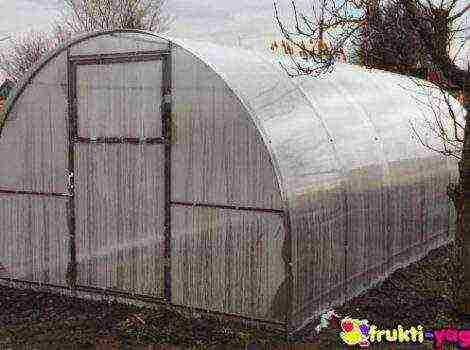Content
- 1 Features of greenhouse varieties
- 2 New varieties
- 3 Low-growing tomatoes for greenhouses
- 4 Salting varieties
- 5 Early varieties
- 6 Large-fruited varieties
- 7 Cherry
- 8 Harvest varieties
- 9 Tall and undersized plants
- 10 Large, medium and small tomatoes
- 11 The best tomatoes of different ripening periods
- 12 High-yielding varieties
- 13 Other varieties
- 14 Rules for planting seeds and planting seedlings
- 15 Useful Tips
- 16 Signs of plant disease
- 17 Harvest varieties of tomatoes for greenhouses
- 18 Low-growing polycarbonate greenhouse tomatoes
- 19 Variety selection rules
- 20 Video "Recommendations for growing tomatoes in greenhouses"
- 21 The best varieties
- 22 Video "Which variety to choose?"
From year to year, gardeners select the best varieties of polycarbonate tomatoes for the greenhouse. At the forefront are characteristics such as the ripening time of the fruits, their taste, size and yield.
Features of greenhouse varieties
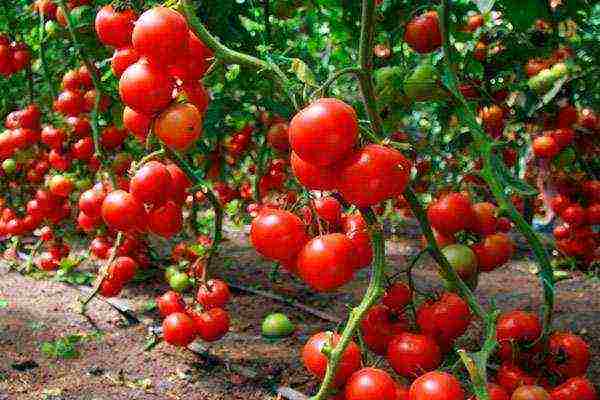
When buying tomato seeds for a carbonate greenhouse, it should be borne in mind that the plant must:
- be prepared for temperature extremes;
- tolerate excess moisture;
- grow into one stem;
- be able to pollinate;
- be hardened against disease.
Both tall and low-growing tomatoes, both early and medium ripening, are planted in the greenhouse.
New varieties
Gardeners have already appreciated the new varieties, which are mostly hybrids. Breeders have given them the best properties of popular varieties.
Alliance F1
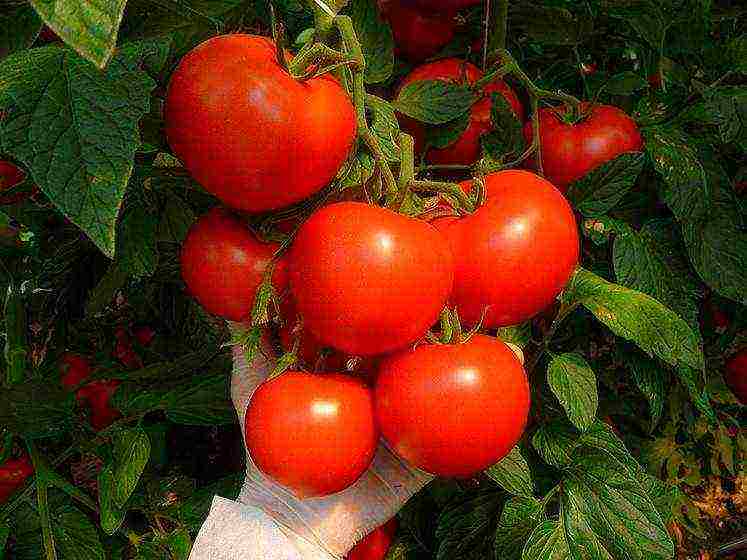
A hybrid that can be grown both in a carbonate greenhouse and in the open field. Ripens early - in 70 days. Semi-determinant. The fruits are round, slightly flattened. On the brush there are 4-5 pieces of 200 g each. Tomatoes are very tasty and sweet, they have dense and fleshy flesh.
Fantasio F1
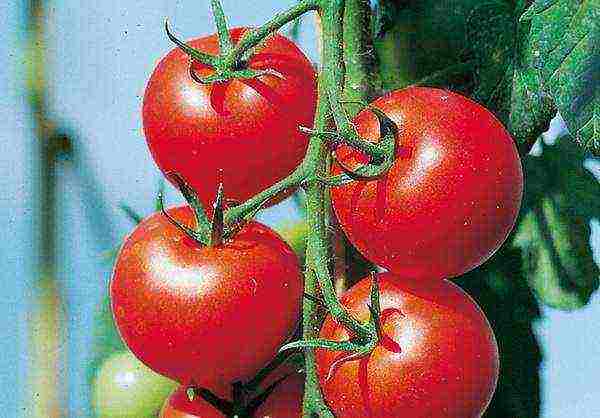
Early maturing hybrid, tall. The creators of the variety guarantee an abundance of large fruits. Tomatoes are round in shape, slightly flattened on top. The color is bright crimson. The taste is excellent. Another advantage of the variety is resistance to late blight, tomato mosaic and nematodes.
Laurel F1
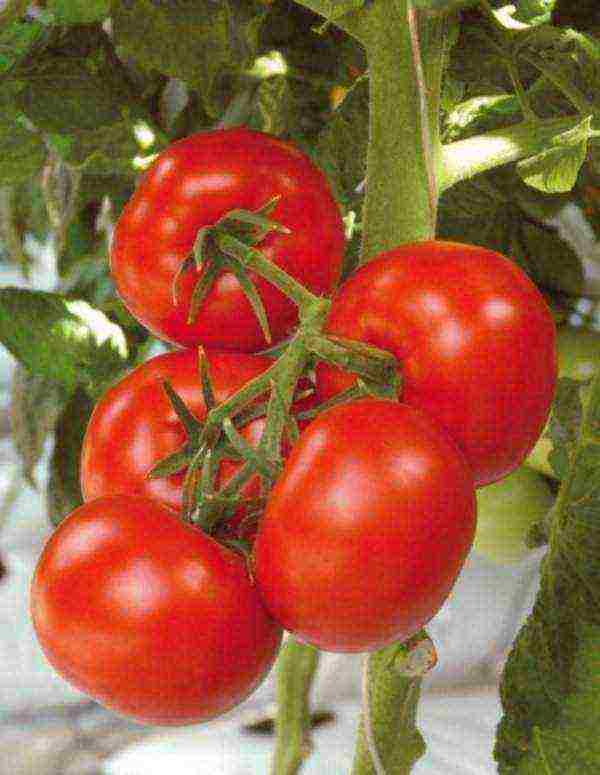
A tall bush, reaching 1.5 - 2 m, bears fruit with bright red tomatoes. The average weight of rounded-flattened fruits is 200 g. They have a very dense structure, which increases keeping quality and transportability. The ripening period is 90 days.
Junior F1
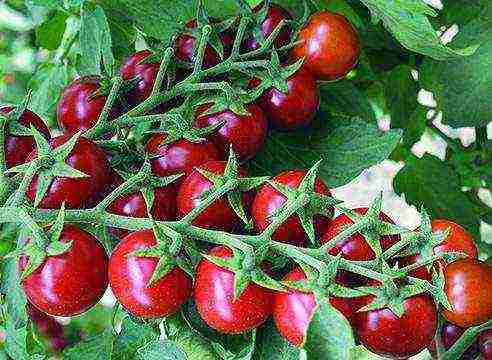
A versatile hybrid in its intended purpose. Ultra-ripe: will delight with bright red fruits after 80-85 days. Superdeterminate: grows up to 50-60 cm in height. Fruits are oval, bright red, with a smooth, sometimes ribbed surface. Weight - 70-100 g. 6-10 kg of tomatoes can be harvested from 1 m².
Pietro F1
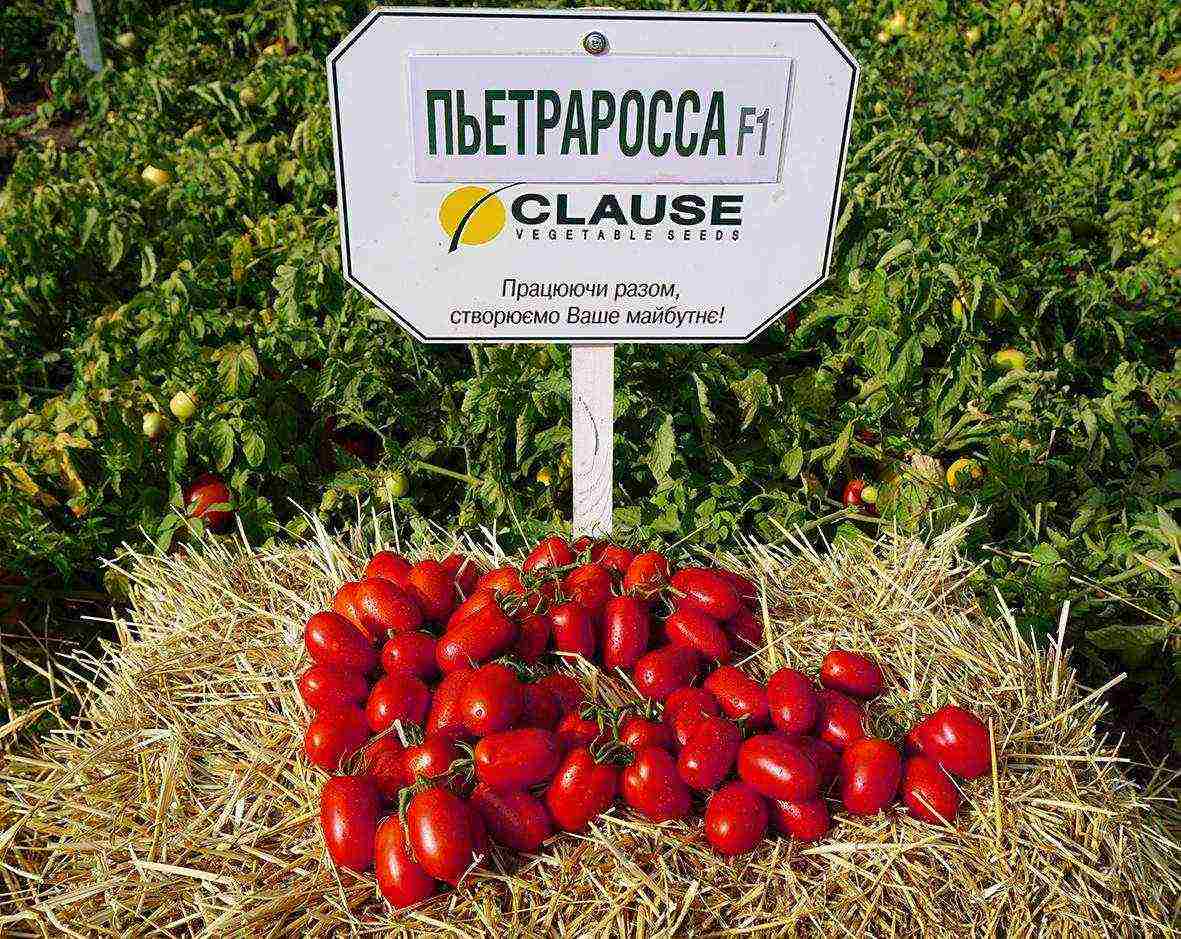
An early ripe hybrid with high commercial qualities. Fruits delight with taste, evenness and the same size. Suitable for salads, processing and long-term storage. The bush is indeterminate, very drought-resistant. Protected by breeders from common tomato infections.
Stellate sturgeon

A new Siberian variety that, with proper care, will give a high yield and amazingly sized tomatoes. The largest tomatoes can weigh 1.5 kg. They are heart-shaped, bright red in color. A grower can get up to 5 kg of tomatoes from one plant. Medium ripening variety. The bush is determinate.
Fenda F1
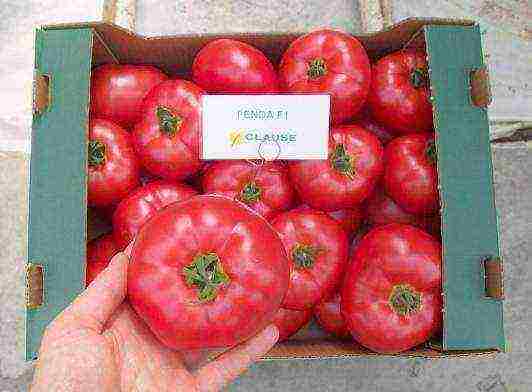
This hybrid is indeterminate, very productive and early maturing. Since it grows up to 1.5-2 m in height, it requires tying and pinching. It is grown in 1 stem. Resistant to disease. Oval fruits gradually turn pink, reach a mass of 200-350 g. They do not crack, they are very tasty. They are versatile in preparation.
Siberian trump card
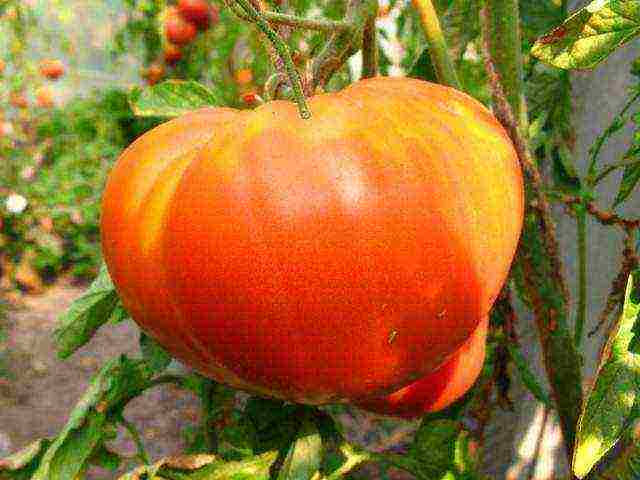
This is a large-fruited, high-yielding, mid-season variety. Red-raspberry fruits grow up to 700 g. They are slightly flattened in shape, very sweet in taste. Suitable for preparing salads and various preparations. The Siberian Trump bush is limited in growth - it reaches 80 cm. It is spreading, so it is necessary to pinch. Grown in 1-2 stems.
Alsou

Another Siberian variety that pleases gardeners with large fruits of a beautiful red color. They are dense, easy to carry and transportable. Some of them reach a mass of 800 g. Although the bushes themselves also reach a height of 80 cm.
Low-growing tomatoes for greenhouses
Greenhouses allow tall tomatoes that look like long vines to be grown. But to save space, it is recommended to plant a few undersized bushes.
Betta

This is an ultra-early ripening variety. A small bush that reaches only 50 cm will delight with fleshy fruits. They are delicious, versatile. From one bush, you can get 1.5 - 2 kg of tomatoes.
Torbay F1

A salad hybrid with pink pulp. Tomatoes are slightly flattened, large, but the bush itself is low - up to 100 cm. Ripening occurs in 90 days.
Salting varieties
There are special requirements for varieties for pickling and pickling. Tomatoes should be about the same size, firm, with a thick skin. The following varieties have these properties.
Octopus F1
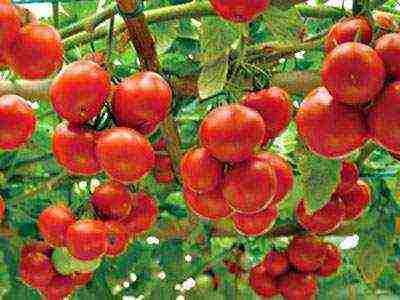
A late-ripening hybrid variety, thanks to which whole clusters of tomatoes with 5-6 fruits in each will appear in the greenhouse. The fruits are red, round, fleshy and dense inside, weighing 100-160 g. The bush itself is powerful and strong, with proper care, warmth, light and nutrition, it can reach 4.5 m.
Such a tomato tree is distinguished by high productivity. The fruiting period lasts long enough: 18 months when the greenhouse is heated. Disease resistant. Suitable for industrial cultivation. It is also used for fresh dishes, but more often for canning and salting.
Little havroshechka F1

A versatile hybrid suitable for both greenhouses and open fields. Semi-determinant (grows up to 1.5-1.8 m), compact. It is distinguished by an early ripening period (75-78 days) and a high yield (9.5 kg per m²).
Tomatoes grow in brushes - 5-7 pieces each. They are small (25-30 g), bright red, round, but slightly flattened. The taste is very sweet and aromatic. They are eaten fresh and canned. The seeds of the variety are best sown in the second half of March. Dive - after 20 days. Plant in a greenhouse in April.
Tolstoy F1
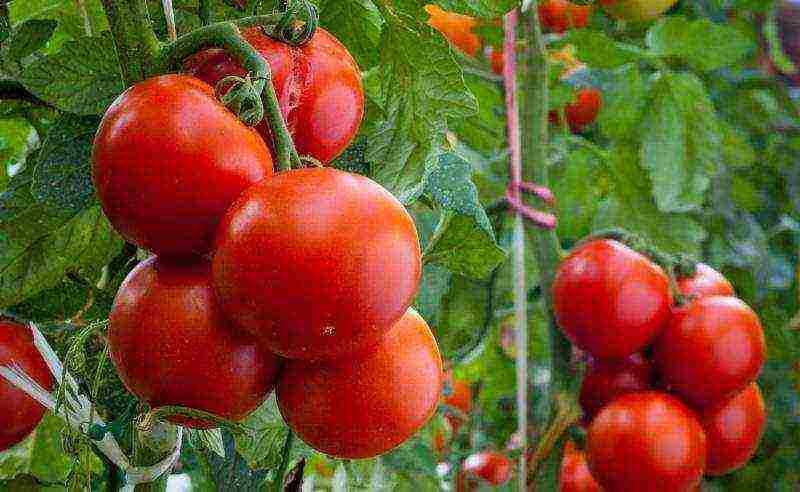
Indeterminate hybrid on which bunches of tomatoes grow. They have a rounded-cuboid shape, when ripe they become bright red, fleshy. They ripen in 70-75 days. From 1 m² you can get 12 kg.
Palenque F1

These are tomatoes with plum-shaped fruits. Their dense structure allows them to be preserved and salted. From 1 m² you can get up to 12 kg of fruit.
Olya F1

An ultra-early ripening hybrid, resistant to various whims of nature. Easily tolerates both heat and cold. On the superdeterminate bush, 15 brushes are formed, which bloom and ripen at the same time. From 1 m² you can collect 10-15 kg. Fruits are medium-sized (120-180 g), smooth, round, red, juicy, with sourness. They are eaten fresh, and canned food is also prepared. The variety is tolerant to diseases.
Hurricane F1

This is a canning hybrid.Small fruits grow, even and dense. They have an increased content of ascorbic acid. The variety is early maturing. Tall bush.
Diabolic F1
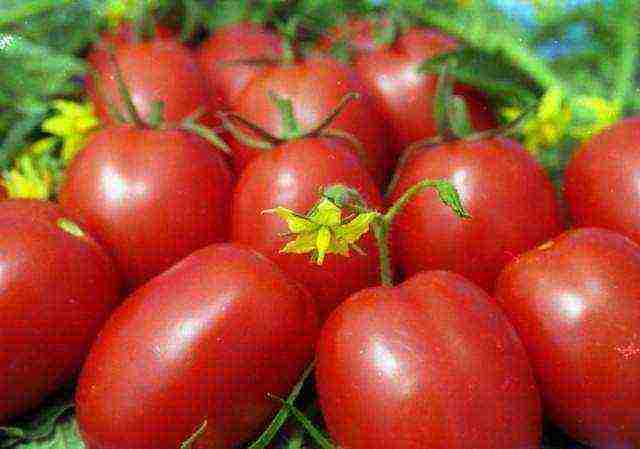
A productive, hardy and reliable hybrid. The fruits are not very large, they are plum-shaped with a spout at the end. They begin to sing in 100-120 days from germination. A powerful plant grows up to 1.6 m in height, which must be tied up. An important advantage of the variety is its resistance to the most common tomato infections.
Grozdevoy F1
An indeterminate hybrid with clusters of 8-9 tomatoes grows from the seeds. They are distinguished by an elongated oval shape, an average size (80-120 g) and a deep red color. The fruit has excellent taste. But these are not the only advantages of the variety: it easily tolerates temperature changes, and is disease-resistant.
Early varieties
Tomato lovers plant varieties of different ripeness in greenhouses. Early ripe ones will delight you with fruits already in July.
Pink Gel F1
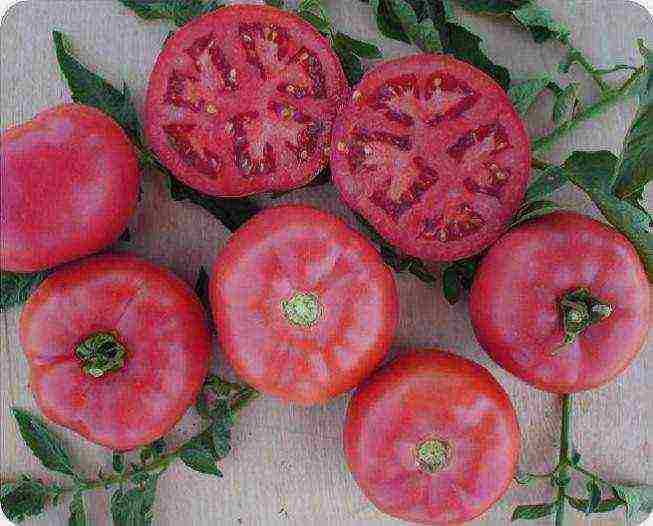
Delicious, salad hybrid with large pink fruits. They are large, but do not crack. Ripens early, not capricious to temperature extremes. The bush is powerful, resistant to viruses and fungi.
Infinity F1
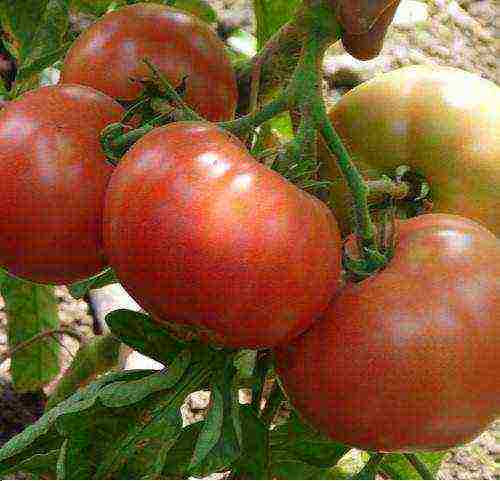
One of the hybrids of new author's varieties of Russian breeders. Possesses excellent commercial qualities, rich productivity and immunity to diseases. But the most important thing is that Infinity tomato retains its specific taste and smell, which a number of foreign analogues do not have.
The variety is early maturing. The plant reaches almost 2 m. Smooth, dense, 300-gram tomatoes ripen on it. From 1 square meter - almost 17 kg. They do not crack, they are well transported.
Large-fruited varieties
Such varieties are more often used for salads, sauces and juices, because they crack, and creep in cans. But it is they who delight gardeners with juicy and sugar pulp.
Pink giant
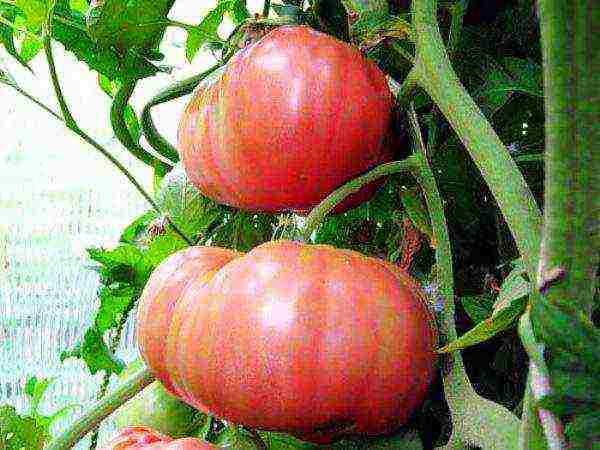
Tall variety with very large tomatoes. Their mass is 250-700 g. The shape is flat-round, the color is deep pink. The fruits are juicy, fleshy and very tasty. But they can crack. From 1 m² you can get up to 15 kg.
Swamp
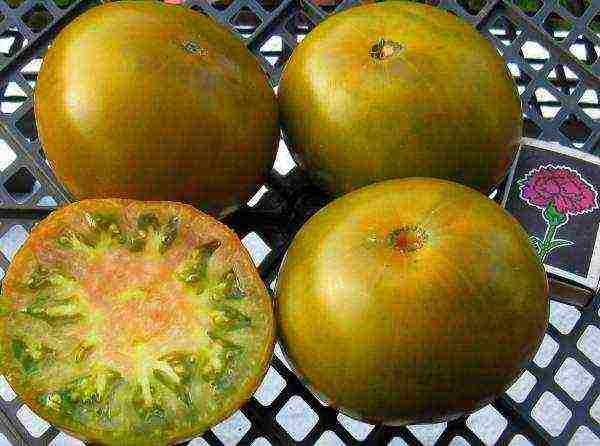
A low variety with an interesting feature: tomatoes, even when ripe, remain greenish-yellow in color. Such green-fruited tomatoes have an original sweet and sour taste. Productivity - up to 5.5 kg from 1 m². Not recommended for long-term storage. The bush itself is low.
Mazarin
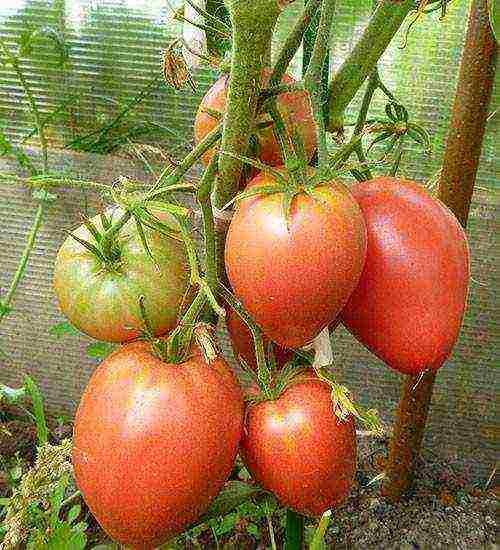
This is an exceptional variety with heart-shaped tomatoes weighing at least 600 g. They have a juicy, sugary pulp, very few seeds and a great aroma. Most often used for salads. The variety is early maturing, medium-sized.
Tanya F1
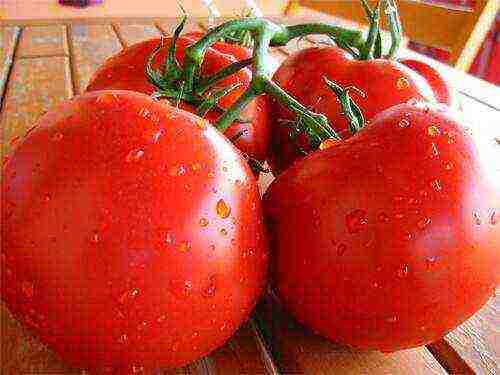
Another versatile mid-season hybrid. Determinate, with a powerful stem and strong lashes. Fruits weighing up to 200 g grow on them. They are round, dense, lying. Suitable for salads and cooking preparations.
Gilgal F1
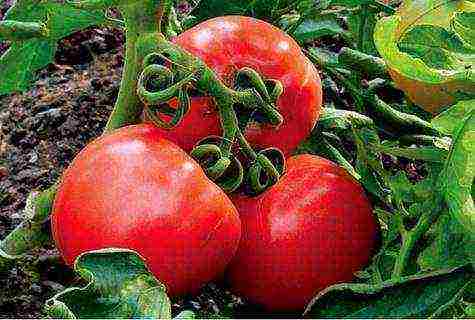
A versatile hybrid capable of bearing fruit both in the greenhouse and in the open field. The bush is indeterminate, medium early. Fruits are red, large, round, slightly ribbed. Weight - 250-300 g. Productivity - 25 kg per 1 m². Used in salads.
Bear Paw

The variety can please the gardener with large fruits and a high yield. 6-8 kg are obtained from 1 bush. Tomatoes are flat-round, even and shiny. The inside is fleshy and sugary. The bush grows up to 1.7 cm, requires tying.
Persimmon

The variety got this name because of the golden-orange color of the fruit. The pulp is tender, low in acids, high in carotene. Recommended for dietetic food. The plant reaches 70-100 cm. More than 2 kg of fruits are obtained from 1 bush.
Mikado pink

It is an indeterminate variety, the height of which reaches 2.5 m. Early maturing - the first fruits ripen within 96 days after sowing the seeds. They are large, pink, weighing 300-600 grams, fleshy, sweet and sugary in taste. 10-12 kg of tomatoes are removed from each meter of the planted bushes. Fresh salads and canned food are prepared from them.
Breeders have instilled in the plant resistance to diseases.Seeds are sown in late February and early March. They dive when the first leaf appears. Planted in a greenhouse at the end of April. To prevent the bush from falling, they tie it up. Form into one stem, tearing off unnecessary shoots. The growth point is pinched over the 7-8 brush.
Rosemary F1
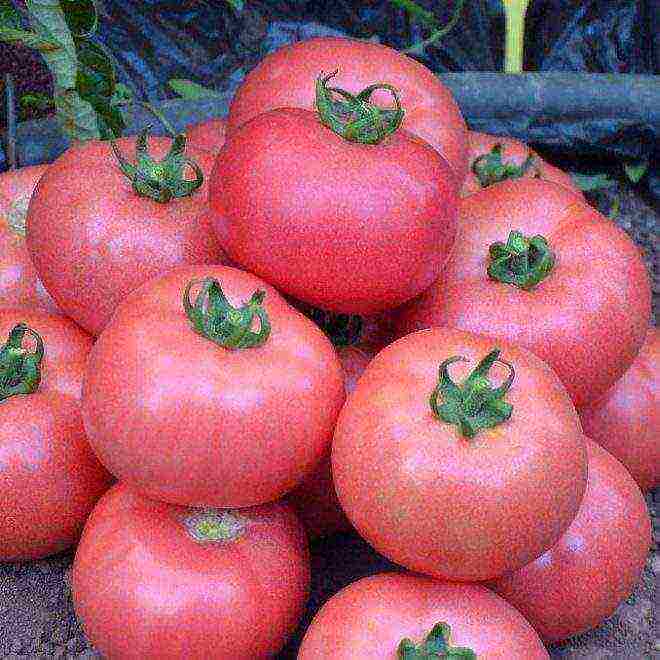
It is a hybrid with large fruits. One bright pink specimen reaches 400 g. It has a juicy pulp, rich in vitamin A. For this reason, the hybrid is used in diet and baby food. Due to their thin peel, they are not suitable for canning. But they are suitable for cooking salads, sauces and juices. Fresh fruits are poorly stored.
The variety is medium early, high-yielding (24-33 kg per square meter). The bush reaches a height of 120-130 cm. It requires tying. Not afraid of the most common diseases.
Cherry
Small tomatoes have gained popularity for a long time. They are used to decorate various dishes, marinate and enjoy fresh taste. They are so sweet that they deserve the title of dessert.
The best varieties are recognized:
- Yellow cherry: sweet taste, weight - 15-20 g, color - yellow.
- Parrot F1: sweet red fruit.
- Ferry: Orange-colored tomatoes, very sweet.
In a heated greenhouse, cherry blossoms can bear fruit for a whole year.
Harvest varieties
One of the most important characteristics when choosing tomato seeds.
Abakan pink
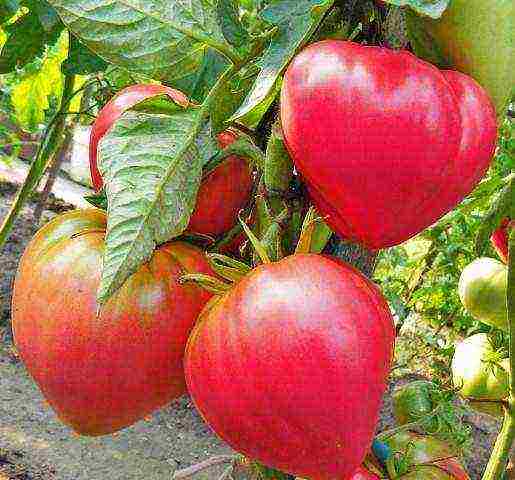
Tomato from a series of Siberian varieties. It is distinguished by its pink color, very juicy and sweet fruits that can grow up to half a kilogram in weight. They make delicious salads, snacks and juices. The variety is determinant, mid-ripening (120 days), medium-yielding (4 kg from 1 m²). Resistant to fungi.
Pink Elephant
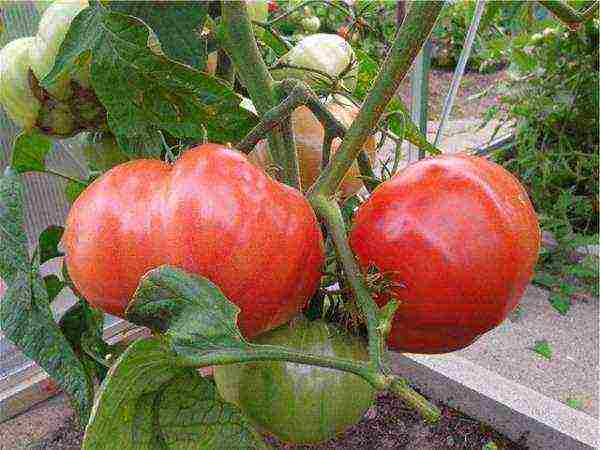
The plant grows up to 1.5 m in height, forms clusters of 3-4 tomatoes. But the fruits are large - up to 300 g, especially on the lower branches. They are dark pink in color. The pulp is almost seedless, juicy and sugary. The taste is delicious, intensely sweet. 7-8 kg are grown from 1 m². The variety is semi-determinant. The bush is tied to a support as it grows. Mid-season, requires planting for seedlings in mid-March.
Budenovka

Variety suitable for capricious climates. In addition to unpretentiousness, it pleases with large fruits that ripen 105-110 days after sowing. They are heart-shaped: rounded, with an elongated nose. This feature gave the name to the tomato. Due to its thin skin, the variety does not differ in keeping quality and suitability for pickling. It is more of a salad fruit. When ripe, they are pink with reddish flesh. From 1 m² you can grow about 20 kg of tomatoes.
The plant is indeterminate, grown in 1 or 2 stems. Requires pinning. It is sown for seedlings at the end of March. The disadvantage of the variety is its low resistance to fungi and viruses.
Blagovest F1
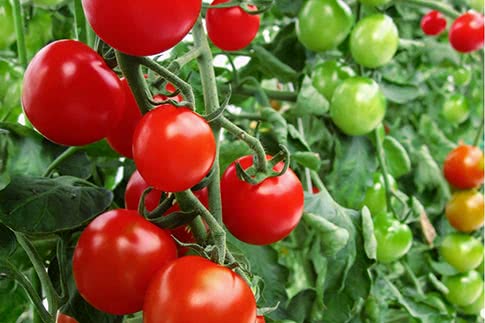
Tomatoes of this variety can be grown only in a greenhouse, but still we can say about its versatility. Delicious fruits are good for salads, canning, storage and transportation. Their mass is 80-100 g. The taste is excellent.
This is an early ripe hybrid: 98-103 days pass from germination to ripening of bright red tomatoes. A determinant bush with a height of 1.6-1.8 m grows, which must be tied up. To achieve the promised yield (17 kg), it is formed into 2 stems. The plant is immune to cladosporium, fusarium and tobacco mosaic virus.
Talitsa F1
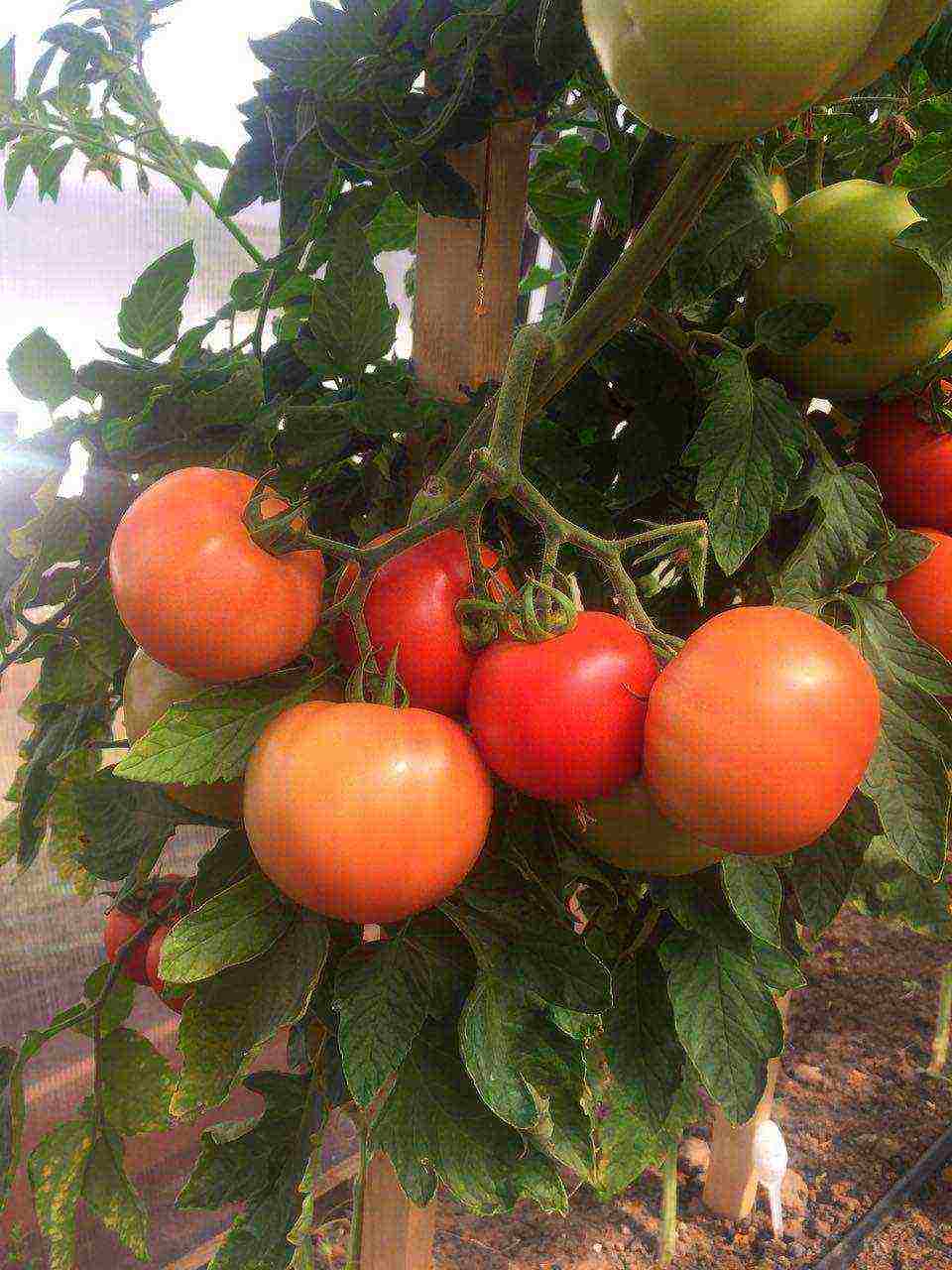
Early maturing hybrid. The bush is not limited in growth, it is formed into 2 stems. Round tomatoes gradually become bright red. Their weight is 180-200 g. The yield period is very long. Productivity - 16-18 kg per m². Tomatoes are versatile in use.
In one polycarbonate greenhouse, it is worth planting seeds of different varieties. To make tomatoes happy with the harvest throughout the summer.
Growing tomatoes in greenhouse conditions allows you to get a good and (if necessary) early harvest. Heat and high humidity create the best conditions for the development of not only plants, but also bacteria that provoke diseases. Not all varieties are suitable for greenhouses.It is necessary to give preference to those of them that are resistant to diseases.

Polycarbonate greenhouse tomato varieties
Tall and undersized plants
Tomatoes are divided into determinate and indeterminate, or short and tall. Short-growing plants usually yield early crops and stop growing quickly. They do not require pinching, but this procedure can increase their yield.
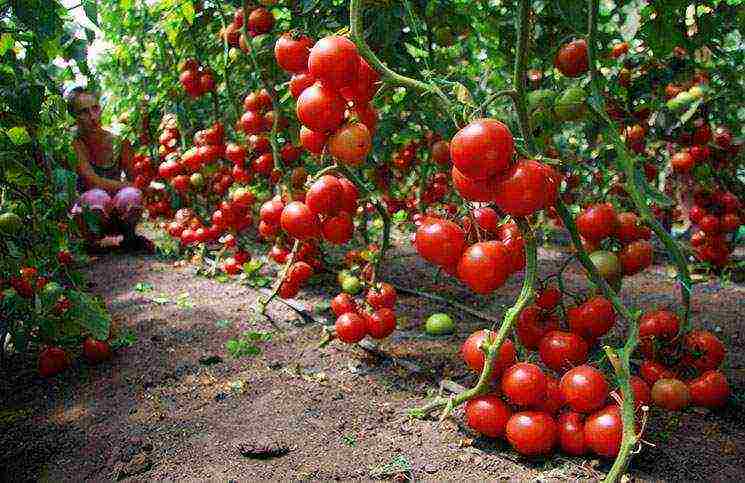
Growing tomatoes in a greenhouse
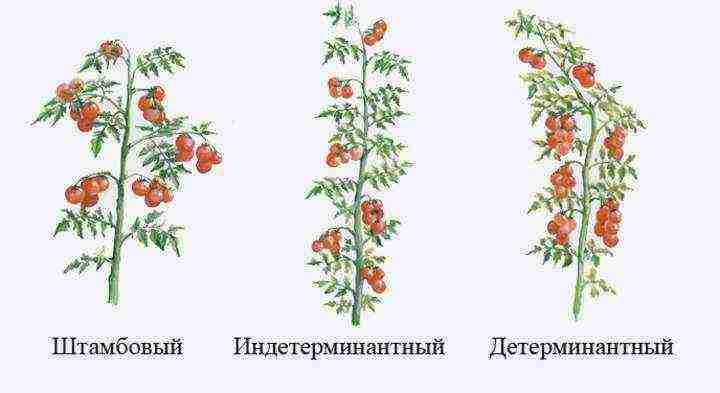
Types of tomato varieties
Tall tomatoes guarantee a larger yield, they can have an unlimited number of clusters of fruits. Usually they give a late harvest, suitable for storage. Low-growing tomatoes are recommended to be planted along the walls, and tall ones - in the center.
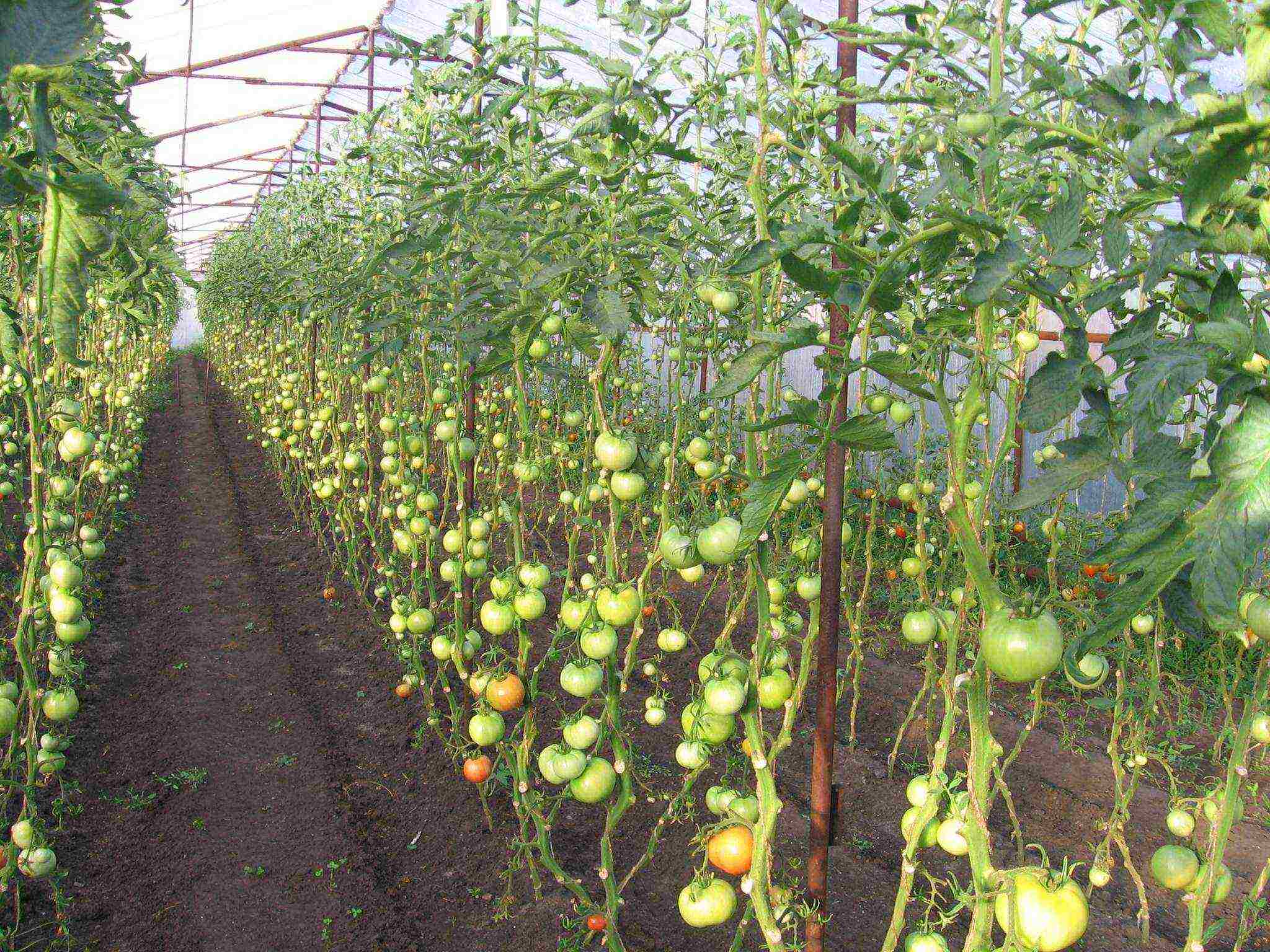
Tall tomatoes
Growing indeterminate plants in greenhouses allows for higher yields. They require special care and the construction of supports. With proper care, you can get 10-20 kg of harvest from the bush. Great attention must be paid to plant nutrition and proper care.
Table. The most popular tall tomato varieties for the greenhouse.
|
De Barao |
It is immune to most diseases and frost resistant. The maximum height is 2.5 meters. |
|
Black Prince |
A versatile plant with large fruits. It can be up to 2 meters. Very rarely suffers from late blight. |
|
Talitsa F1 |
Not afraid of waterlogging of the soil. Height - about 2 meters. Differs in strong immunity. |
|
Miracle of the earth |
It has a high growth and large fruits, which are used fresh and for the preparation of juices and sauces. |
|
King of giants |
A productive plant up to 1.8 meters high. |
|
Kazachka |
Small fruits suitable for canning. |
|
Samara F1 |
They have even fruits. They can be stored for 1.5 months. |
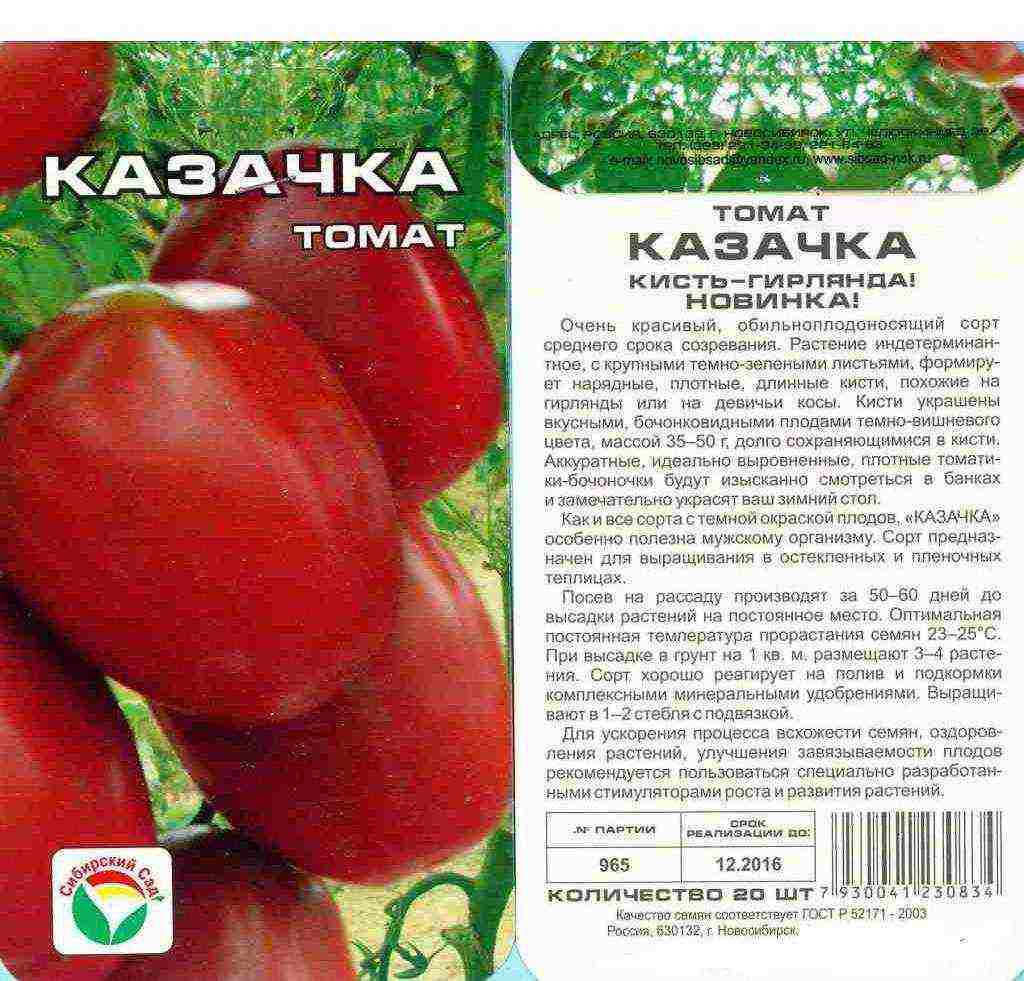
Tomato Kazachka
Table. The most popular undersized varieties of tomatoes for the greenhouse.
|
Blagovest F1 |
The fruits are large, the plant is resistant to diseases. |
|
Biathlon F1 |
Fruits weighing 90 grams. The plant is high-yielding. |
|
Grandee |
Mid-season with even and smooth fruits. The maximum height is 70 cm. |
|
Danko |
A plant with large fruits. Resistant to dry conditions. Used in salads. |

Tomato Grandee
For planting tall tomatoes, it is necessary to prepare the ground in the fall. As a rule, manure is added to the soil. Potassium chloride and superphosphate are good fertilizers. Do not grow tomato seedlings starting in January. The maximum period at which a plant can be at home is 2 months. Then the stems will begin to bend, become irregular, and the leaves will wither.
Important! It is advisable to grow seedlings of low-growing tomatoes in late March or early April.
Plants can be planted in a greenhouse after 50 days. It was recommended to remove stepchildren. It is imperative to remove the lower leaves every week. Due to their rapid growth, stunted tomatoes rarely suffer from diseases.
Large, medium and small tomatoes
By fruit size, tomatoes are divided into:
- large;
- medium;
- small-fruited.
Large varieties can rarely be used for full-fledged canning. They are often used to make ketchup. When preparing sauces, it is very easy to peel the fruit. It is very convenient to make juices from them. Some varieties are suitable for conservation.

Large tomatoes
The disadvantage of these tomatoes is their short shelf life. Most of the fruits have a fleshy soft composition that makes transport difficult and often rot. There are also tomatoes that have large fruits and at the same time are distinguished by high density.
Table. Popular types of large tomatoes for the greenhouse.
|
Siberian giant |
Tall mid-season plant. In some cases, the weight of the fetus can be up to 1 kg. |
|
Bull heart |
They have a sweetish taste and weight from 300 to 900 grams. Height - up to 1.70 cm. |
|
King of Siberia |
The weight can be up to 800 grams. It is best consumed fresh, but pastas and juices can also be made.Resistant to most types of diseases. |
|
Pride of Siberia |
The plant is tall. The fruits are well kept. The average weight of the fruit is 750 grams, but it can go up to 950 grams. |
|
Boyarynya F1 |
Height - from 1.5 to 1.8 meters. Mid-season. Recommended for fresh consumption. |
|
Crimson giant |
The maximum height is 100 cm. Early ripe tomato. Weight - about 400 grams. Good for transportation. |
|
Scorpion |
A tall plant with fruits of about 600 grams. Salad type. The fruits do not crack. |
Medium varieties have a long shelf life and are versatile. They keep their appearance in the jar and do not burst.
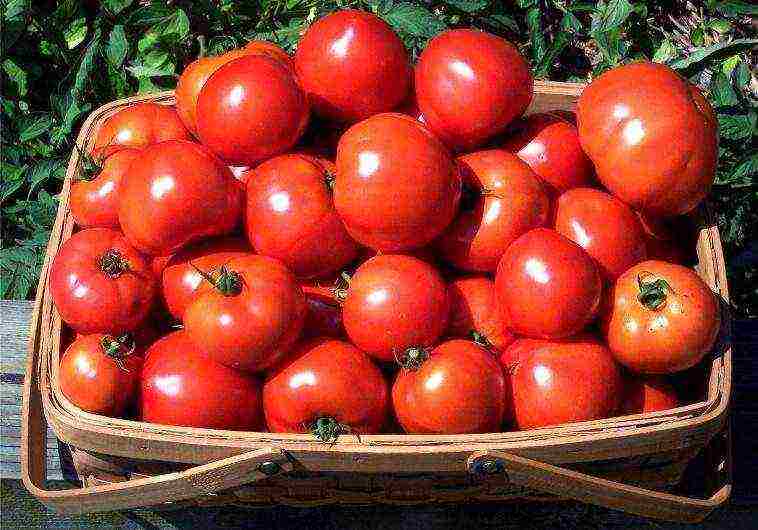
Medium sized tomatoes
Most Popular:
- Typhoon F1.
- Tornado F1.
- Caspar F1.
- Watercolor.
Small tomatoes will be appreciated by small children and adults as part of salads. The fruits are also convenient for rolling. They can be used to decorate any dish. Tomatoes can be frozen, pickled and salted. You should not make juices and purees from them.
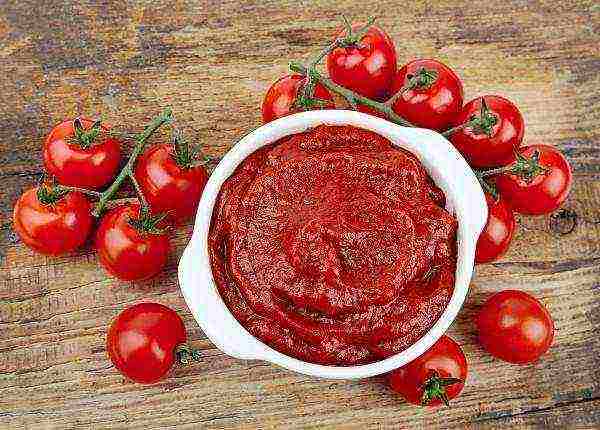
Small tomatoes
Important! Small tomatoes are suitable for drying, which can be carried out both in the sun and in the oven.
Small tomatoes:
- Butterfly.
- Bead F1.
- Mariska F1.

Small cherry tomatoes
The best tomatoes of different ripening periods
Tomatoes can be early maturing, early maturing, ultra early maturing. It is advisable to plant several species belonging to different groups in the greenhouse in order to get a high yield until autumn.
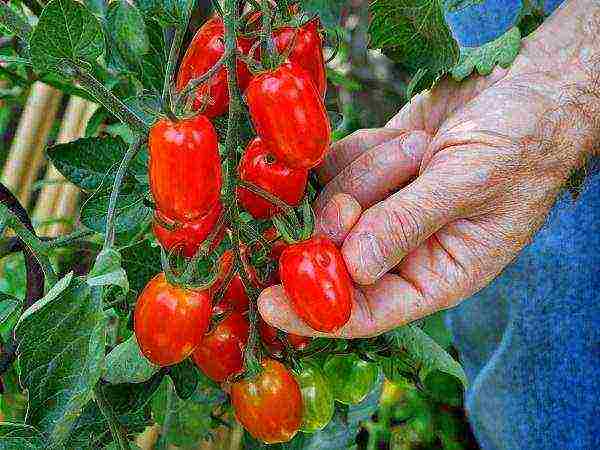
When choosing a particular variety, be guided by criteria such as climatic conditions, ripening times and yield.
Early ripe:
- Typhoon F1.
- Semko-Sinbad F1.
- Presentation F1.
- Buddy F1.
- Ilyich F1.
- Semko-98 F1.
- Search F1.
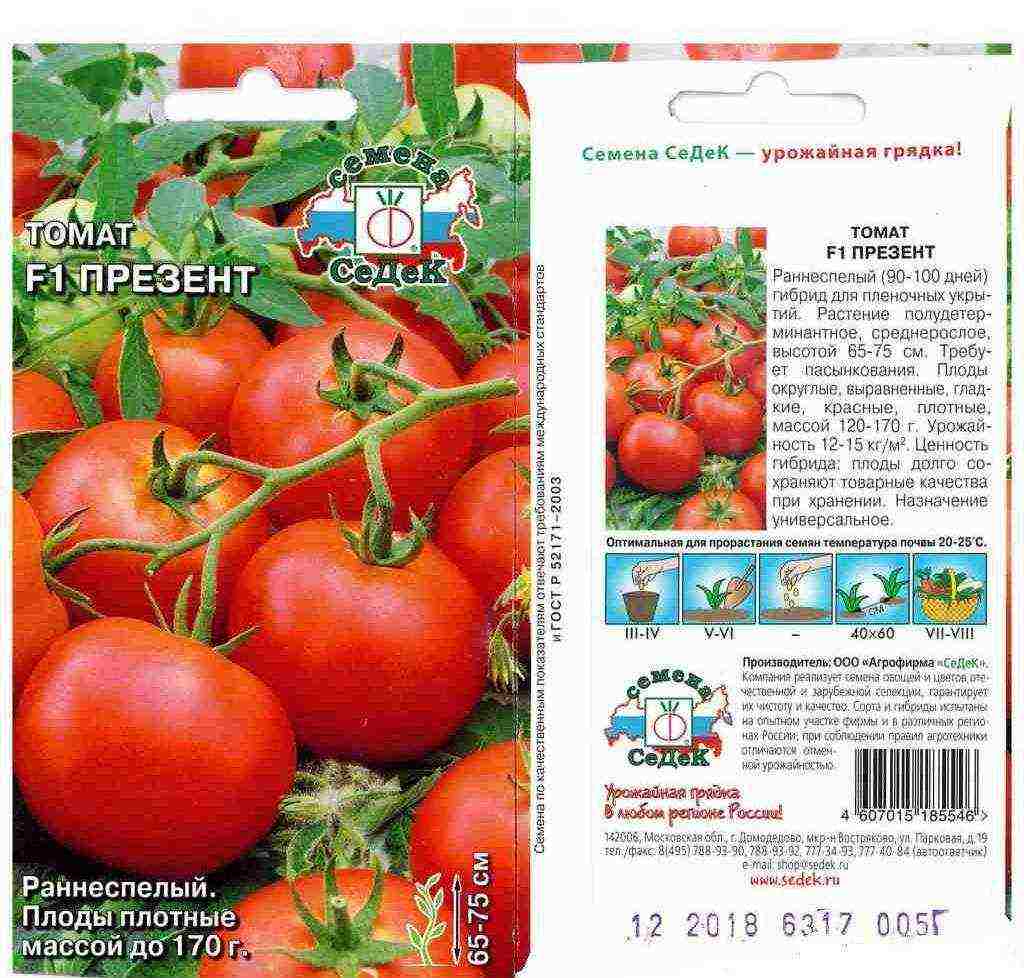
Tomato Present F1
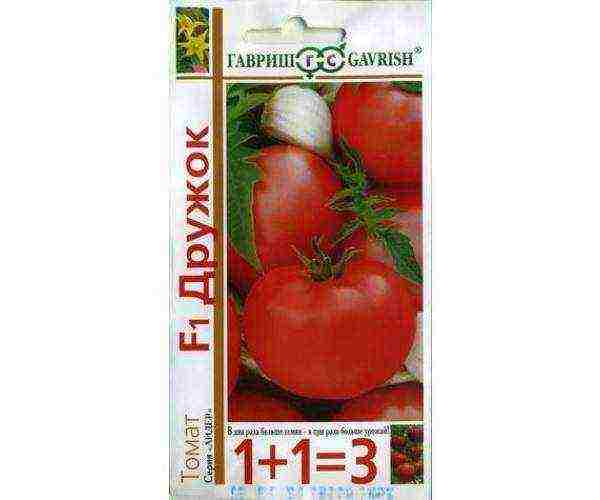
Tomato Druzhok F1
Early ripening:
- Samara F1.
- Tornado F1.
- Hurricane F1.
- Orange
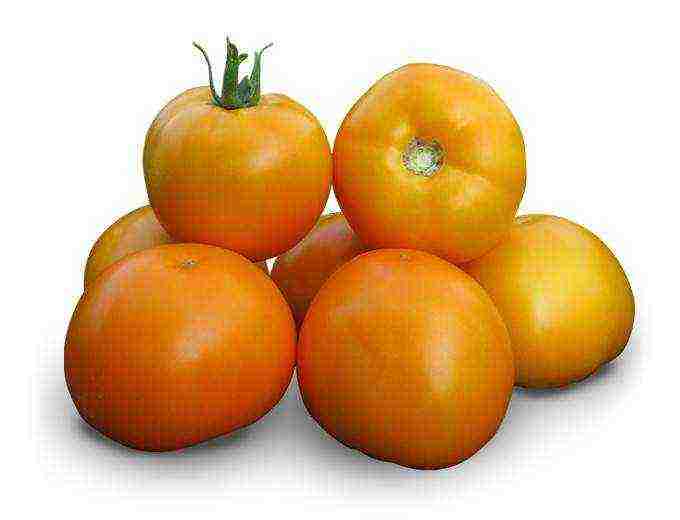
Tomato Orange
Ultra-ripe:
- Pink Miracle F1.
- Amber.
- Junior F1.
- Bear in the north.

Tomato Pink Miracle F1
Seedlings of early tomatoes are planted in March. In 2017, the best time to do this is from March 13 to March 16. At the end of the month, the moon rises, which is also suitable for landing. Ultra-ripe ones can be planted in April in the first half of the month.
Important! You should not plant seedlings of early tomatoes in the winter months - this will only lead to seed damage and poor-quality seedlings.
High-yielding varieties
In most cases, tall plants give a large yield. They require careful maintenance, and in the absence of it in full, the yield can be significantly reduced. Plants have a developed root system, therefore, it is necessary to put a support already at the time of planting. This will prevent root trauma.
Great attention should be paid to ventilation. The optimum air temperature during the growth period is 22 degrees. At the time of flowering and fruiting, an increase of up to 27 degrees is possible. Water the plants with warm water. It is desirable that its temperature is not lower than 20 degrees. Tomatoes must be watered every five days.
Important! The most high-yielding tomatoes that are minimally demanding on growing conditions are representatives of the De Barao variety.
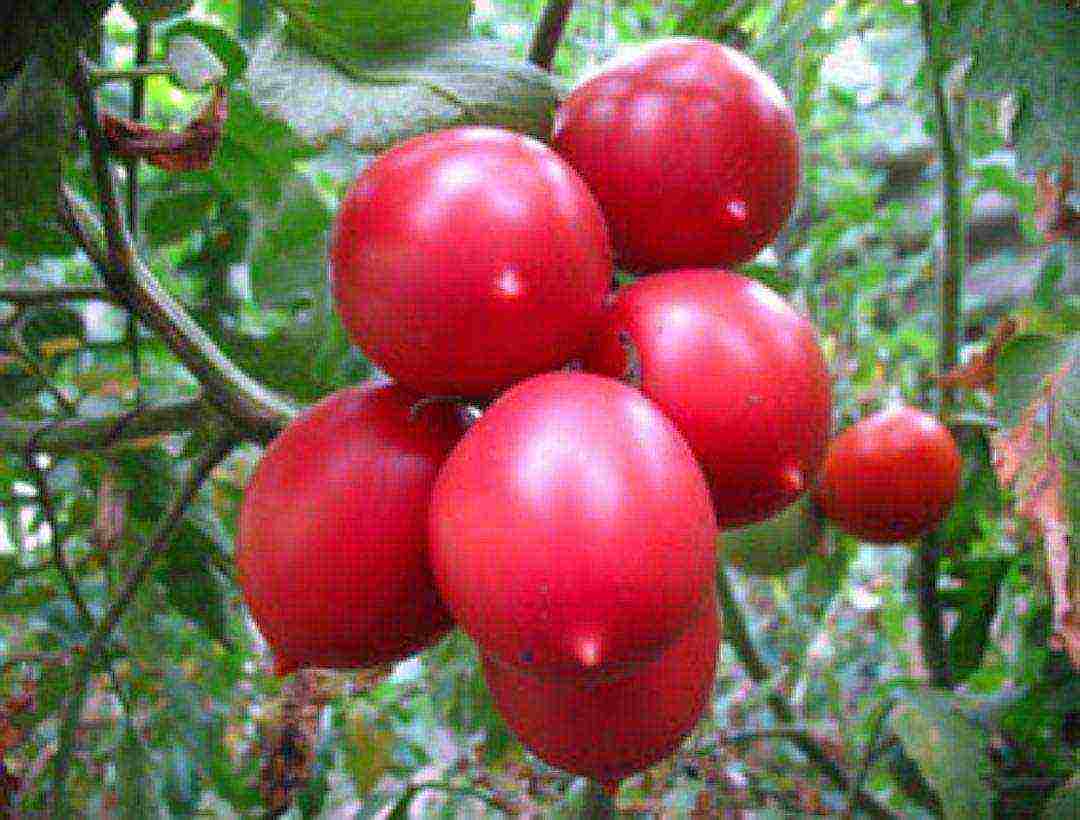
Tomatoes De Barao
This is a tall plant that reaches 2 meters. Usage is universal. Of great importance is the fact that the plant is not afraid of frost and temperature changes. This variety has the largest number of positive reviews and is very popular among summer residents and farmers.
There are several varieties of the variety - pink, orange, black. It is necessary to plant in March. This will ensure the harvest as early as July. Fruit weight is about 100 grams. The most common is De Barao pink.
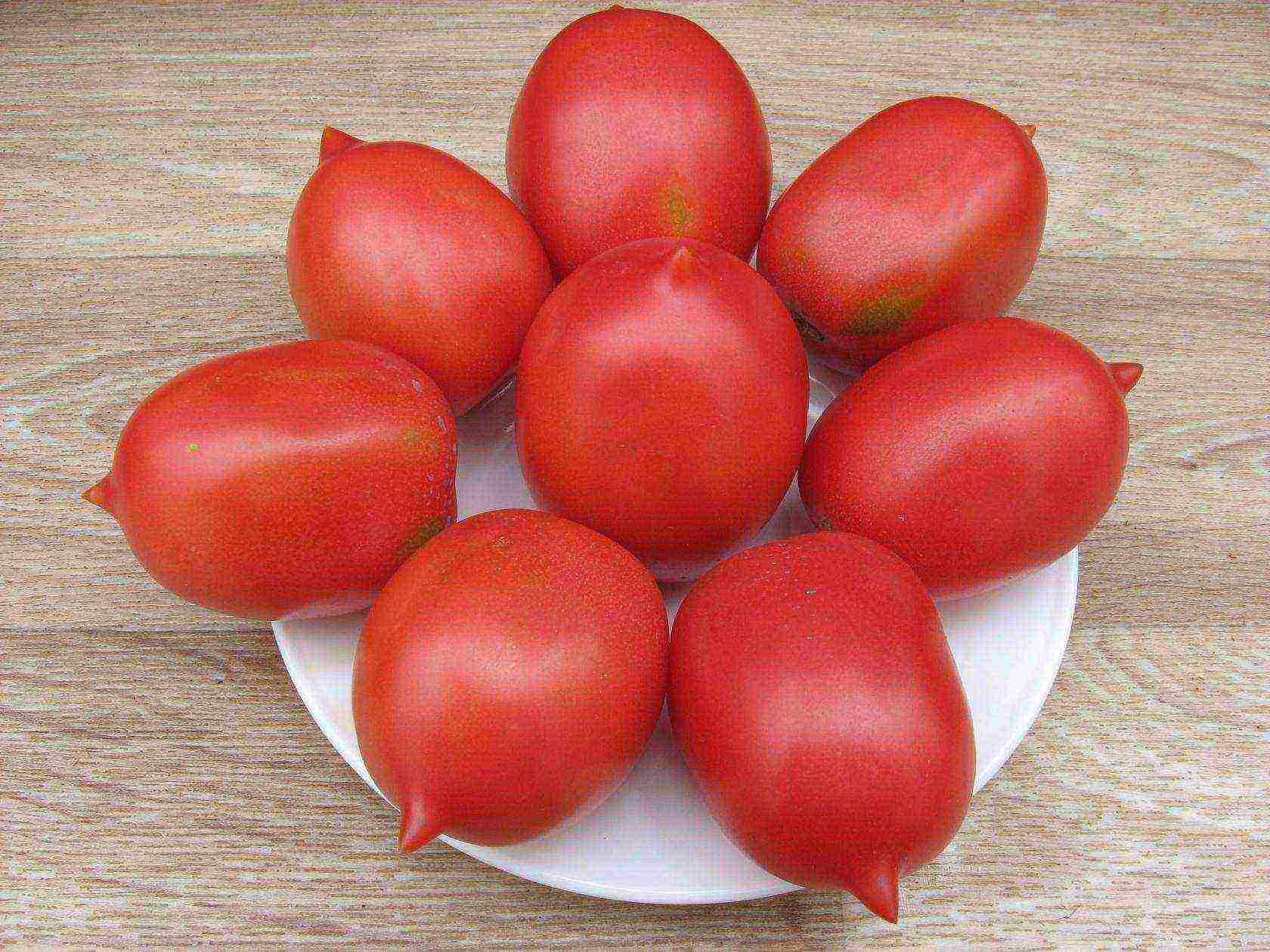
Tomatoes De Barao Royal
On the second place in terms of productivity is Abakan pink. This variety was bred in Altai. Height - up to 1.5 meters. Used fresh, but not suitable for canning. Has small seeds. Most often, tasty and healthy juice, sauces and ketchups are obtained from this variety.
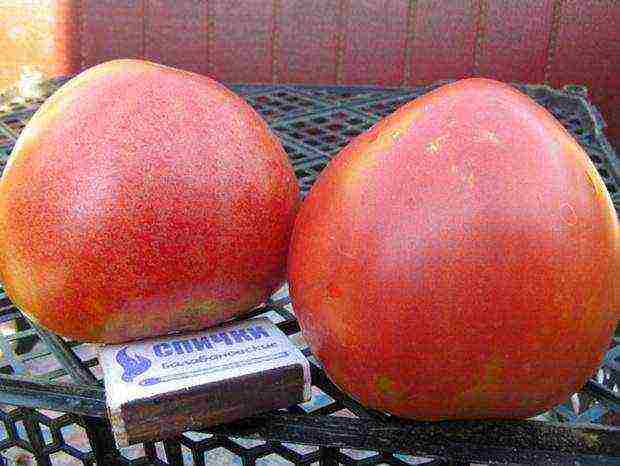
Abakan pink
Important! The variety Auria can give a large yield, but this plant requires careful care, as it is susceptible to various diseases.
Tomatoes Auria
It has fruits of an oblong shape. Tomatoes keep well and do not crack. Another name for this variety is Zabava. This category includes Pink Raisins. The maximum height is 1.5 meters. Can be grown both in the greenhouse and in the open field. It is immune to most diseases. The fruits are well stored and do not spoil for a long time. Tomato for universal use.
Tomatoes Pink raisins
Other varieties
Tomatoes that can be stored for a long time are mostly late. They have a dense structure and are well suited for conservation. The most stable to storage are Ivanovets F1 and Akatui F1. They belong to the early ones. Characterized by disease resistance. Volgogradets and Krasnobay F1 are also well kept. To increase the shelf life of tomatoes, it is worth laying them out in a dark, ventilated room.
Tomato seeds for greenhouse
Ural F1, De Barao and Verlioka F1 are resistant to temperature extremes and frosts. The Ural was created specifically for growing in harsh climates. The plant is tall. Average weight - 300 grams. It is immune to many diseases.
New varieties:
- Biggest F1.
- Juggler.
- The pink king.
- Tyutchev.
Important! Do not plant tomatoes in the same greenhouse for several years in a row - this increases the risk of developing diseases.
Tomato seed properties table
Rules for planting seeds and planting seedlings
To get a rich harvest, it is not enough just to put seeds in the ground and sprinkle them. Follow the instructions below.
Step 1. It is necessary to take a solution of nitrophoska (1 teaspoon) and add it to a liter of water. In the absence of a special solution, it can be replaced with ash.
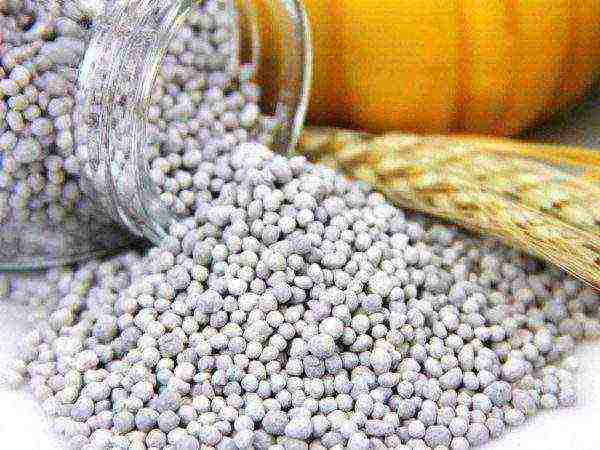
Nitrophoska granules
Step 2. They take special bags made of fabric or just a cotton cloth, soak with a solution. Then the seeds are placed in the bags.
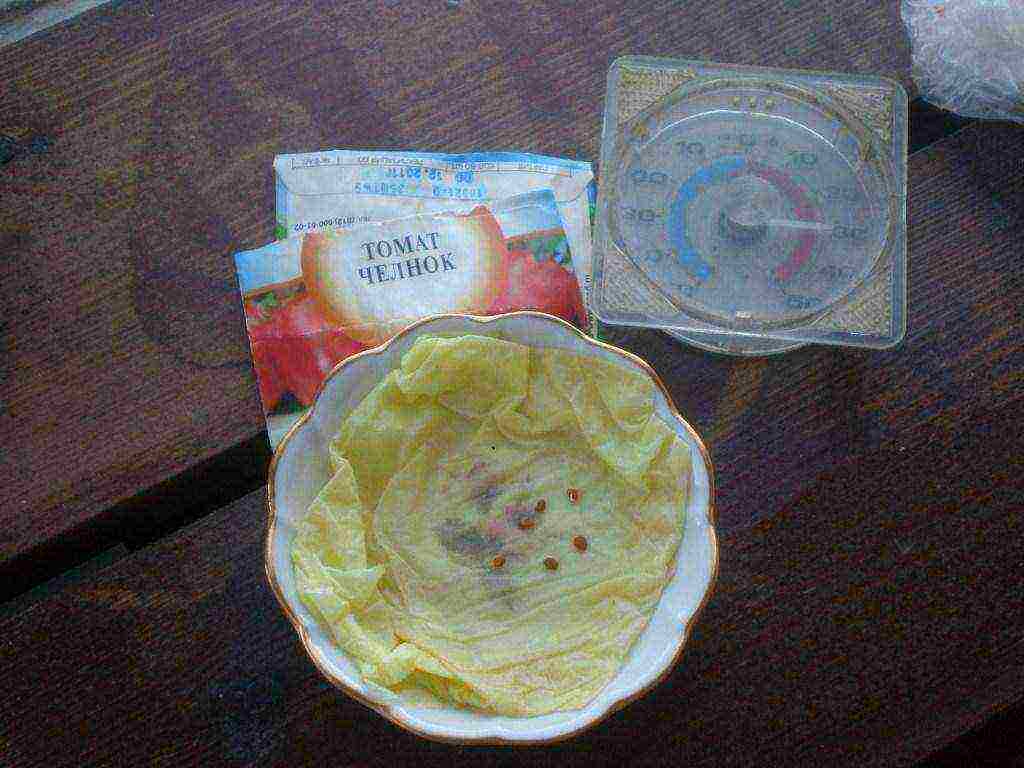
Seed hardening
Step 3. The seeds must be placed in the refrigerator for 2-3 days. This procedure is known as hardening. In this case, the seeds should be wrapped in a bag.
Step 4. For seedlings to be high-yielding, you need to prepare the soil. To do this, you need to take humus, earth and peat in equal parts. After that, the soil is fertilized with potassium, urea and superphosphate. To disinfect the resulting composition, it is placed in the oven for half an hour. Only then can the soil be moistened and scattered over the boxes.

Preparing the soil for seedlings
Step 5. Do not put seeds close to each other. The minimum distance between them is 2 cm. There is no need to water the seeds after planting. It is advisable to cover the boxes with plastic bags to create a greenhouse effect that will accelerate germination. After the first plants sprout, the bags are removed.

Sowing tomato seeds
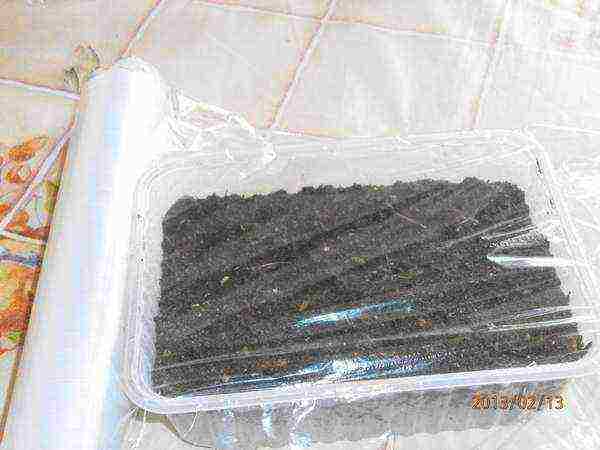
The container is covered with cling film
Step 6. About a week after germination, a dive is carried out (transplanting plants into a larger container). To do this, each tomato is carefully removed with a small lump of soil and placed in another pot.
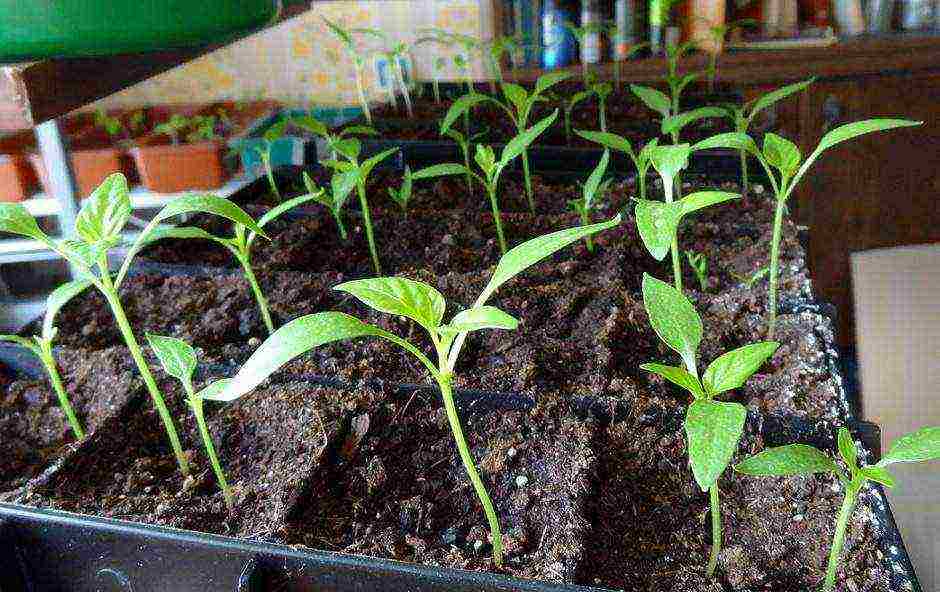
When diving into boxes, seedlings are placed according to the 8x8 or 10x10 cm scheme
Step 7. Seedlings can stay in boxes for about 2 months. In this case, you need to ensure that it does not stretch out. Before planting tomatoes in the greenhouse, it is necessary to harden them. To do this, they can be taken out to the balcony or open the vents at night.
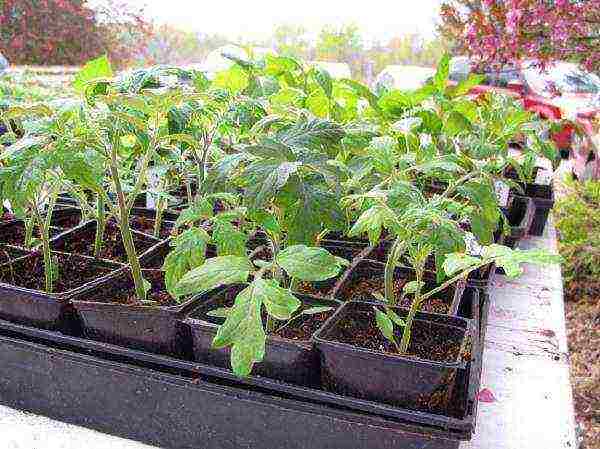
Hardening of seedlings
Step 8. Before planting, the soil must be disinfected. To do this, add a tablespoon of copper sulfate to 10 liters of water and water the soil. If the land has not been pre-treated in the fall, it is advisable to remove about 10 cm of soil that may be contaminated.
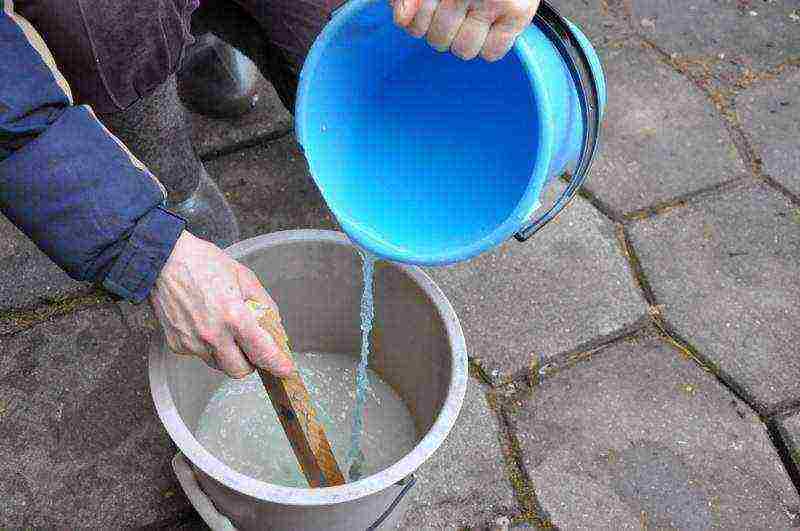
It is worth noting that copper sulfate is far from a safe substance, so it should be used very carefully.
Step 9. Humus is introduced into the ground, weeds are removed.It is necessary to plant plants in warm soil. Otherwise, the roots will not grow and may start to rot. Do not plant the plants very deeply as this will slow down growth due to the formation of additional roots on the lower part of the stem. Before planting, the tomatoes are watered.
Manure as fertilizer for the soil
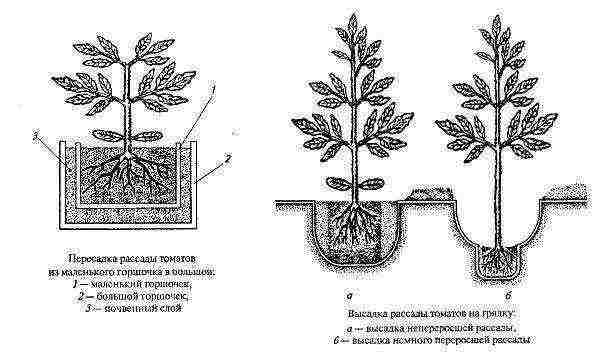
Tomato planting scheme
Step 10. When planting tall tomato seedlings, you must immediately peg. This will allow you to avoid injury to the roots in the future.
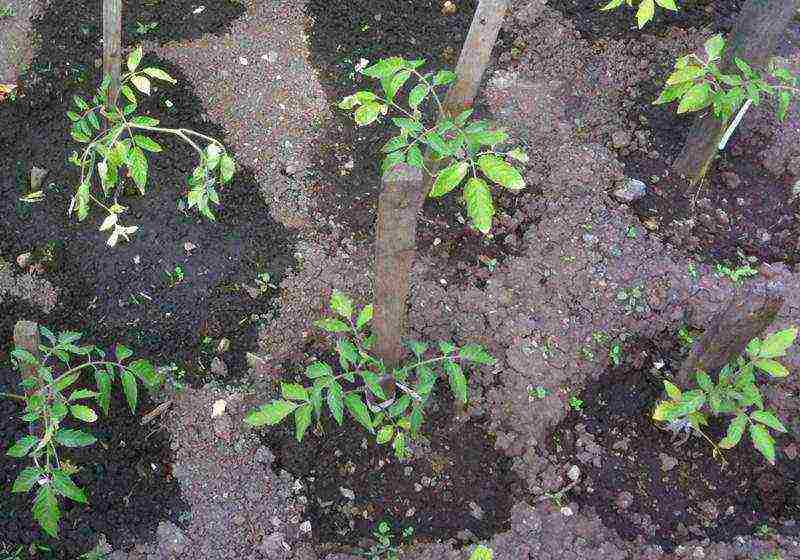
When planting seedlings of tall tomatoes, you must immediately put pegs
Growing tomatoes is hard work. At first glance, all that is required is watering and warm conditions. In fact, the plant will not yield a good harvest if you do not fertilize it, treat pests, create supports and remove the lower leaves. Even improper watering can cause watery and sour tomatoes.
Growing tomatoes in a greenhouse
Growing tomatoes in a greenhouse is not easy, because this culture is capricious, demanding on growing conditions. But any summer resident can get and collect a generous crop of tomatoes.
Useful Tips
- You need to feed the plants with nitrogen in sunny weather. Use an aqueous solution.
- Top dressing by spraying will ensure the appearance of ovaries. For this, you can use a boric acid solution. But it is necessary to spray after 16.00.
- Iodine feeding will positively affect the flowering process. To prepare a solution, 40 drops of iodine are diluted in 12 liters of water.
- It is important to remove the lower leaves. This will improve ventilation and will not affect the yield in any way. The best time for this procedure is in the morning.
- To get large tomatoes, it is necessary to pinch the growth points and remove the shoots from the side.
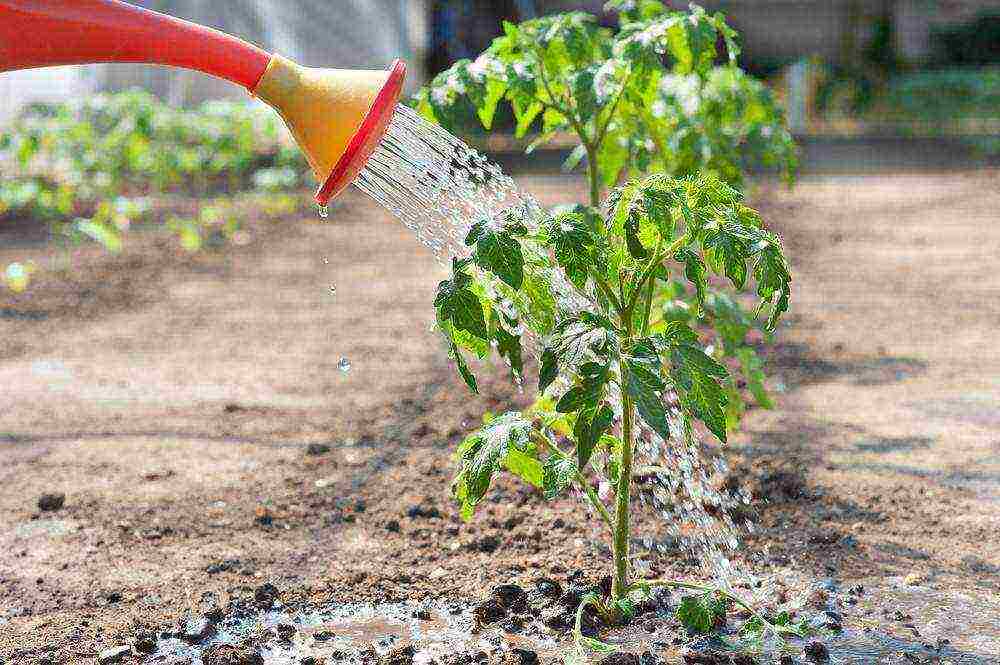
Watering tomatoes with water from a watering can

Pinching tomato stepsons in a greenhouse
Signs of plant disease
Most of the plants grown in greenhouses are disease resistant hybrids. However, lack of light, excessive moisture in the air and contaminated soil can cause infection.
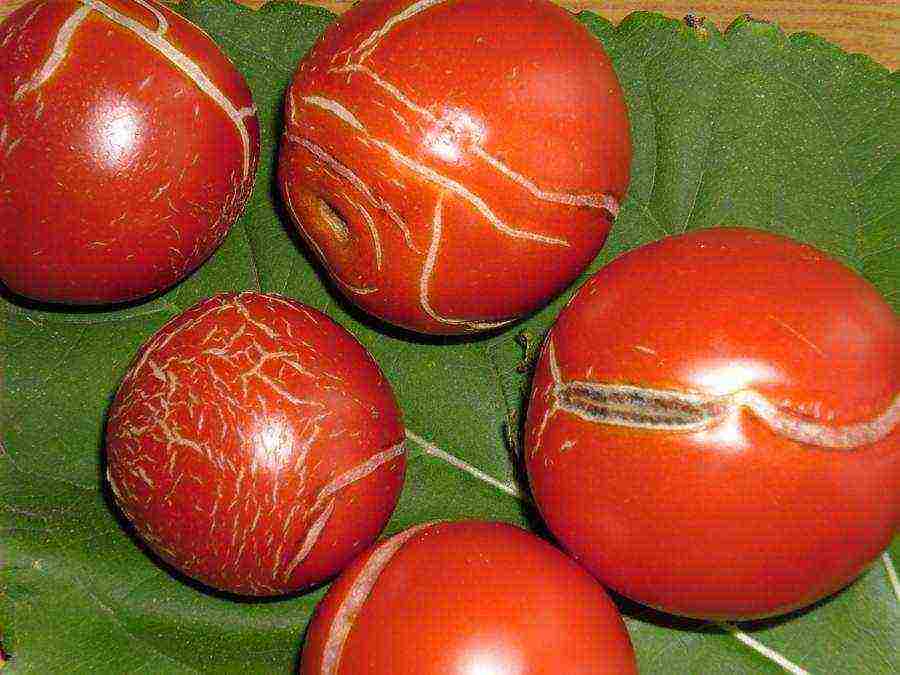
Signs of tomato disease
Tomatoes that are sick can be seen immediately. In addition to external changes, they will not give a large yield and can dry out very quickly despite timely watering. The most common diseases are listed below.
- Streak... Yellow spots appear on the stems and fruits. The leaves become dry and twisted, and the flowers crumble. If the plant is completely infected, then it can die in a short time. Most often, the virus that causes this disease develops when there is insufficient lighting.
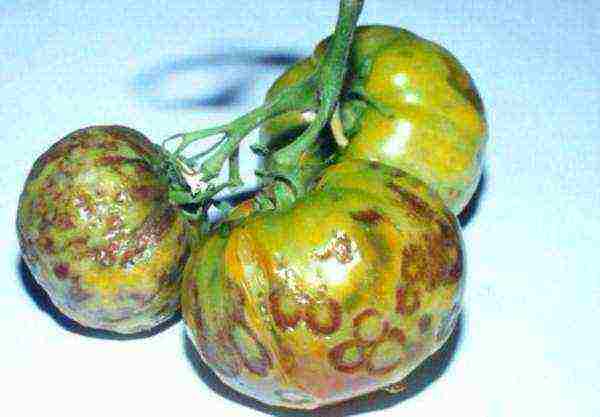
Tomato streak
- White spot... The name of the disease characterizes it. First, white spots form on the lower leaves due to fungal infection, and then rise up. Then black dots appear on the spots. The most common fungal infection occurs in the second half of summer.

White spot
- Cracked fruit... This happens as a result of improper watering, especially when there is an excess of it after a drought. As a result, cracks form in the fruit, where infections and viruses develop.
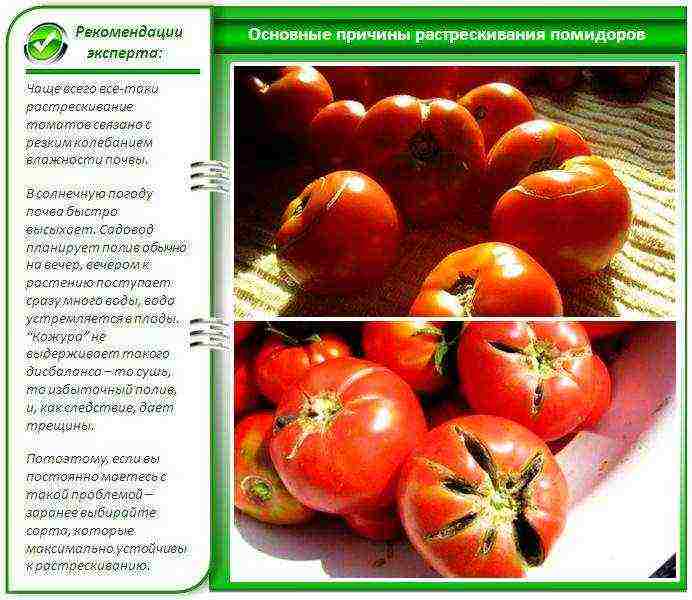
Cracked tomatoes
- Late blight... The disease is characterized by brown spots on the stems and leaves. A white bloom appears on the underside of the leaves. Every day the disease progresses, and the spots increase. Disease can be prevented with careful grooming, spraying and fertilizing.
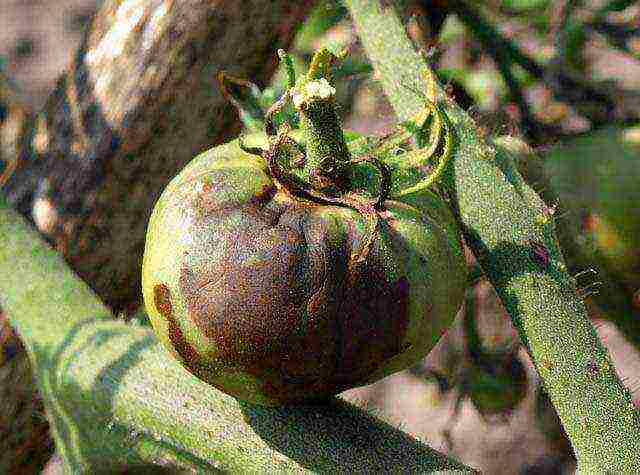
Late blight of tomatoes can be avoided
- Bacteriosis... Plants begin to wither, and there is no lack of moisture in the soil. The disease develops very quickly and, if you cut the stem, you can see the voids inside it and the presence of fluid. In some cases, brown spots can be seen. The disease is not cured. All affected tomatoes must be destroyed, and the rest must be treated with "Fitolavin".
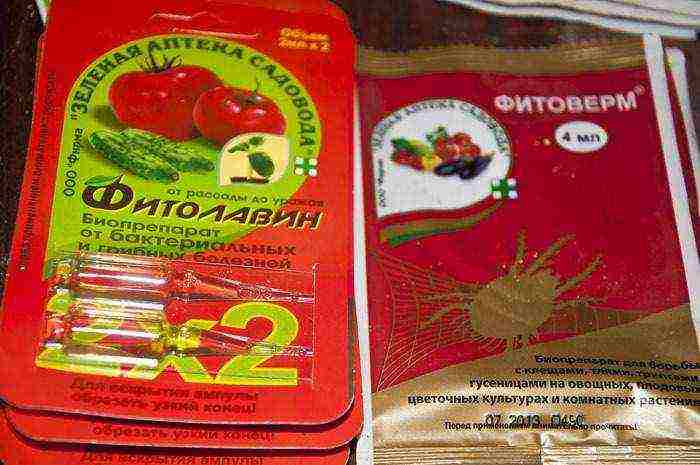
Fitolavin and Fitoverm
- Top rot... Green weeping spots appear on the top of the fruit. Subsequently, the affected areas become hard. In some cases, the disease can only be seen by cutting the tomato. Deoxidizing fertilizers help well from this ailment.
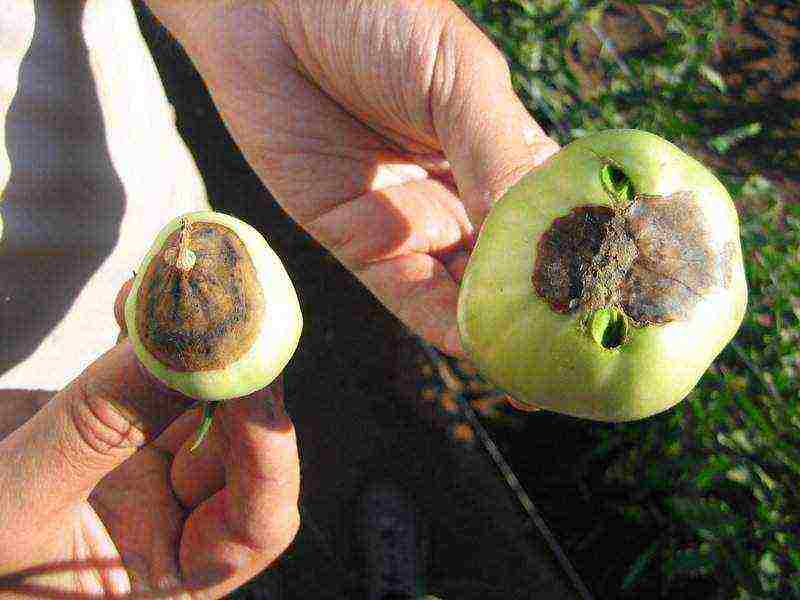
Top rot
- Mosaic... The leaves are irregular in color - light green alternating with dark green and even yellow. Often the disease occurs when growing plants in open ground. Seeds can be contaminated when growing seedlings.
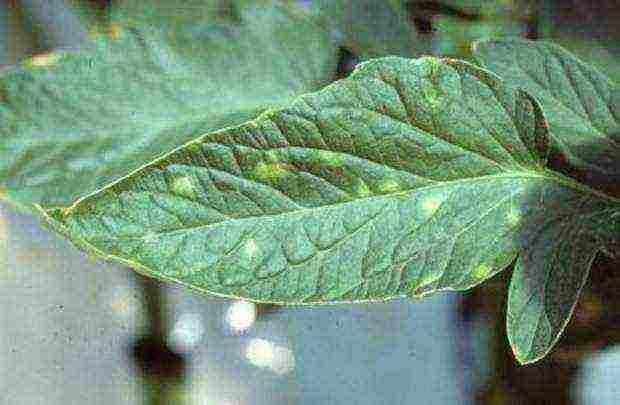
Tomato mosaic
There are a large number of diseases, and some of them are fairly easy to prevent if given the right care, which guarantees strong immunity. At the moment, there are varieties that are maximally resistant to diseases, so that they can be grown on chronically infected soils. With regular tillage, fertilization and watering, you can get a good harvest and keep it for several months.
Video - Tomato varieties for the greenhouse
At the moment, there is a wide variety of varieties on the seed market. Some of them are intended for outdoor cultivation, other varieties of tomatoes for a greenhouse made of polycarbonate or film shelters, there are even for sowing at home. Greenhouse cultivation has become very popular thanks to good and practical materials. And in order for the greenhouse to give its harvest, the best varieties must also be selected. So, what kind of tomatoes to plant in such conditions?
Harvest varieties of tomatoes for greenhouses
Before talking about different varieties of tomatoes, the following should be noted - a greenhouse is a place where very comfortable conditions are created for plants, but even here you can lose your harvest by choosing the wrong varieties. The fact is that insects are needed to obtain fruits, but they are not in greenhouses or there are very few of them. Therefore, tomato varieties must be chosen self-pollinated. Hybrids work best. There is very little hassle with them, and the result is decent.
Variety "Alliance F1"
Refers to tomatoes with early ripening, gives high yields. Tomatoes have round outlines, slightly flattened in shape. One brush can form up to five tomatoes. The taste of the fruit is sweet, the flesh is fleshy, while the fruit itself is not loose.
See also: Diseases of tomatoes in a greenhouse, photos and their treatment
Variety "Honey Spas"
A very popular tomato. Its strengths are excellent disease resistance, and the fruits do not crack. The plant can reach one and a half meters, requires a garter. The yield of one bush is 5-6 kg. The fruits have a large mass, a yellow tint of the skin. The taste is excellent.
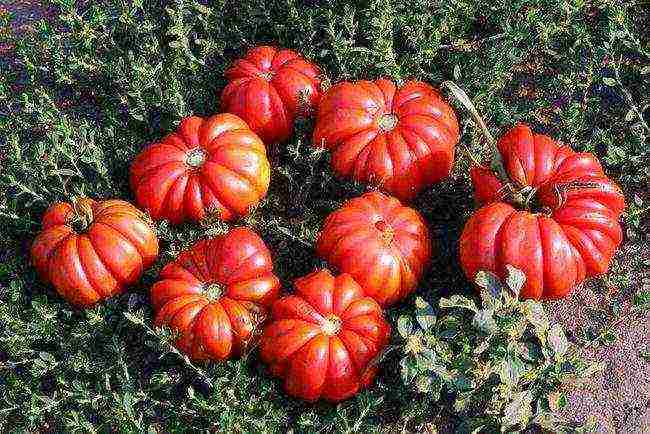 Variety "Mushroom basket"
Variety "Mushroom basket"
Has fruits weighing half a kilogram or more. Their color is red. The plant reaches a height of 2-2.5 meters. Need a garter. The fruits have ribs on the surface and taste good. The variety has an average ripening period.
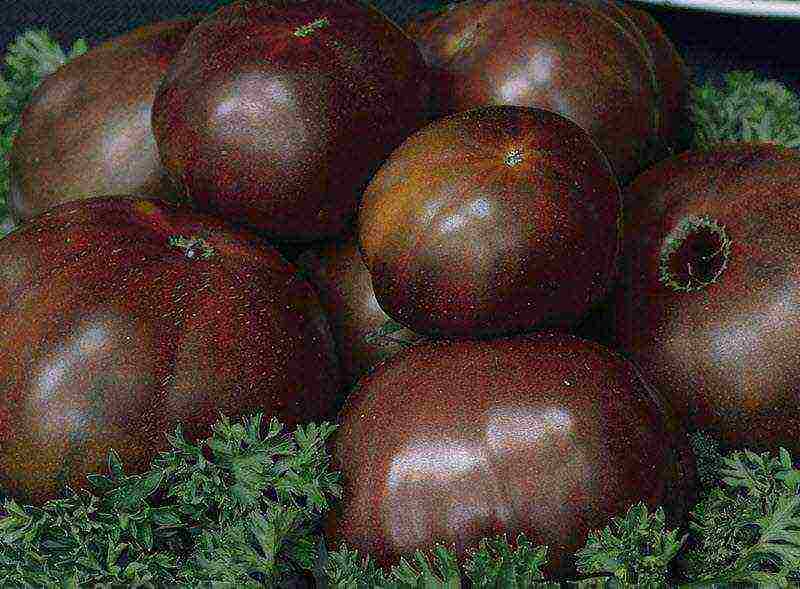 Variety "Black Moor"
Variety "Black Moor"
For lovers of everything unusual, this variety is what you need. After all, tomatoes are dark in color, which may seem strange at first. But this does not in any way affect the yield and taste of these tomatoes. The plant is up to one and a half meters high. The fruits keep very well and are often used for sale on the market.
See also: Tomato "Gina". Characteristics and description of the variety
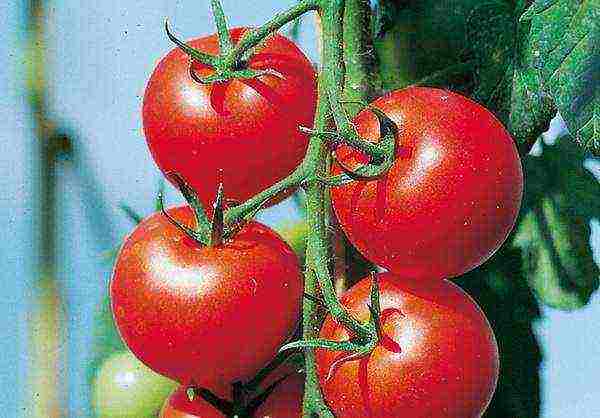 Variety "Fantasio F1"
Variety "Fantasio F1"
Tomatoes are classified as medium-early ripening varieties. One brush can pick up 7-8 fruits. Their color is scarlet, their shape is round. The pulp is nutritious, fleshy, also one of the best varieties of tomato for greenhouses with resistance to late blight.
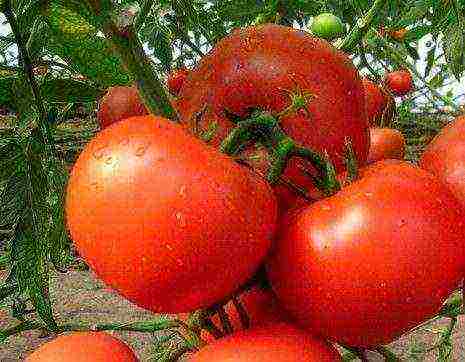 Variety "Lorelia F1"
Variety "Lorelia F1"
Another highly disease-resistant variety. But he has a long ripening period. The fruits are round, red, slightly flattened.
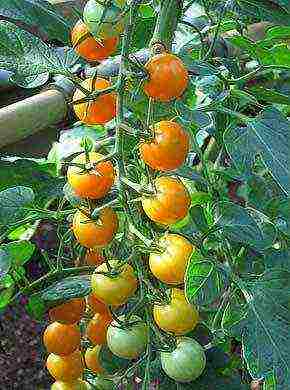 Variety "Fantasy"
Variety "Fantasy"
It can reach a height of almost two meters. The aerial part is very strong, one bush yields 10 kg of fruit. Good when eaten fresh and even better in salads. We are very fond of summer residents.
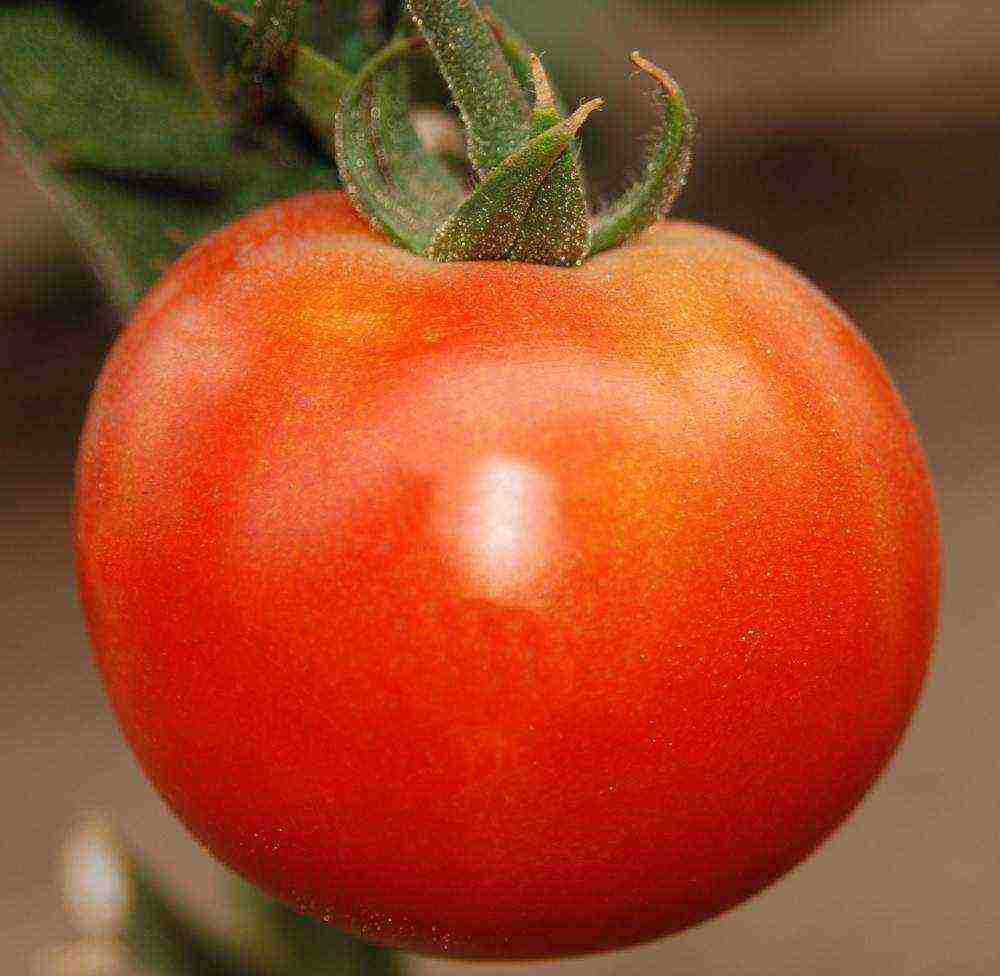 Variety "Pietro F1"
Variety "Pietro F1"
Tomatoes with early ripening. It tolerates very hot weather well.At the same time, the fruits are very tasty, there is sweetness in them. The color is bright, scarlet. They are well kept, which makes it possible to grow a hybrid for sale. The whips are high.
These were tall varieties of tomatoes for greenhouses. Now let's move on to the next ones.
Low-growing polycarbonate greenhouse tomatoes
Variety "Betta"
Belongs to a variety with early fruiting dates. The color of the tomatoes is red, the shape is round. The taste and aroma are pleasant. Best for fresh meals and for preparing fresh salads.
 Variety "Torbay"
Variety "Torbay"
This variety is already good at conservation. The bushes are compact, the fruits are scarlet. Tomatoes are covered with a dense skin, under which juicy, aromatic and fleshy pulp is hidden. They do not burst in the jar during heat treatment. But you can eat these tomatoes fresh.
Variety "Sprut F1"
One of the highest yielding tomatoes. The fruits are small, such compactness is an excellent option for conservation. The skin is dense, the color of the tomatoes is red. Forms a lot of fruits on one cyst. Plus - excellent resistance to all adversity, including disease.
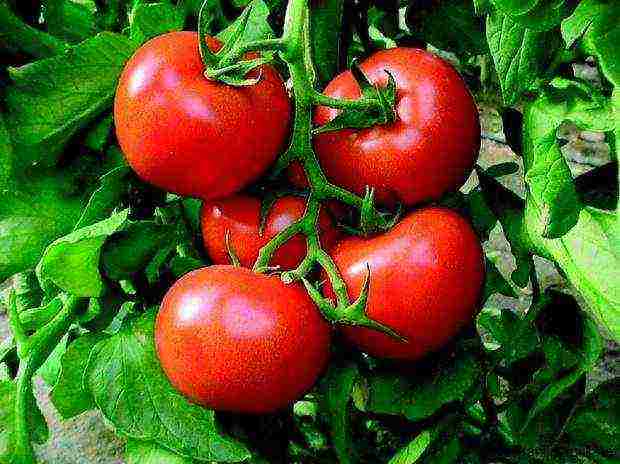 Variety "Kroshechka-Khavroshechka F1"
Variety "Kroshechka-Khavroshechka F1"
To many, this variety resembles Cherry, due to the fact that the variety produces small-sized tomatoes that cover the brushes abundantly. Good in any form - in preservation, in salads, for decorating a festive table.
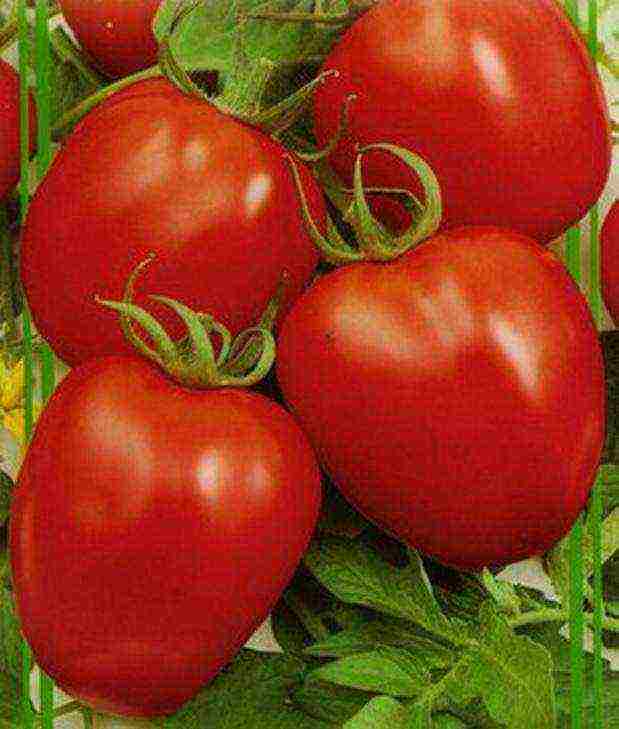 Variety "Palenka F1"
Variety "Palenka F1"
This variety has shown itself well in greenhouse cultivation. Suitable for preservation, the skin does not crack during processing. Forms fruits very well, excellent taste and aroma. The color of the fruit is red, slightly elongated into an oval.
Variety "Olya"
The fruits look very appetizing and aesthetically pleasing, which is good for sale. They have a red color, smooth shapes. Belongs to varieties with early ripening, gives little stepsons. Doesn't require special attention to itself. The taste is very good.
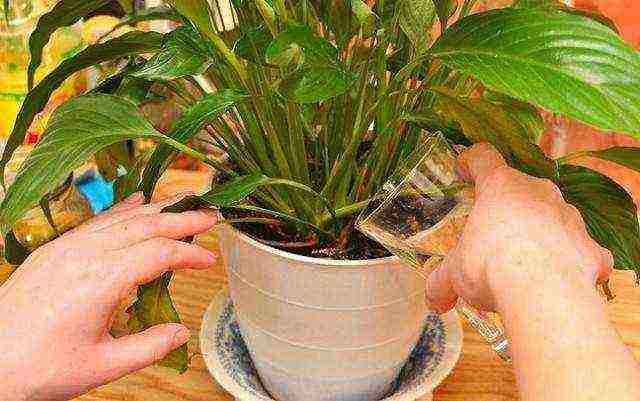 A remedy from which plants grow by leaps and bounds! Just water your plants with it ...
A remedy from which plants grow by leaps and bounds! Just water your plants with it ...
See also: Tomato "Explosion" reviews photos who planted?
 Grade "Grozdevoy"
Grade "Grozdevoy"
Another tomato that is sometimes compared to Cherry, as it forms a lot of tomatoes on the cyst. Therefore, it is easy to preserve it. Gives excellent yields of delicious tomatoes.
Infinity grade
Tomatoes with early ripening. It can be grown both in greenhouse conditions and outdoors. Valued for good taste. Does not crack during ripening and cooking. This makes canning possible.
Variety "Yellow Sugar"
Forms fruit well on one hand with proper care. Fruits can give a weight of one kilogram. At the same time, tomatoes are very tasty and aromatic, they do not sour.
Also, summer residents praise for the early ripening periods such varieties as "Don Juan", "Alpha". For regions with a cold climate, "Taimyr" is perfect.
As for lovers of Cherry tomatoes, all varieties with the word "Cherry" in the name have shown themselves very well in greenhouses. This means that the variety produces small tomatoes that are dotted like cherries on the clusters. They are very good for decorating dishes, for preserving. We hope we answered which varieties of tomatoes are best for planting in a polycarbonate greenhouse.
These are some of the best varieties for greenhouses. By planting them, you will definitely not lose, and the harvest will be excellent.
In recent years, polycarbonate greenhouses have firmly taken their place in the areas of summer residents. Unlike standard film greenhouses and glass greenhouses, polycarbonate has better thermal conductivity, high impact resistance, diffused light transmission, withstands strong temperature changes and does not transmit harsh ultraviolet rays that have a detrimental effect on plants.
Variety selection rules
When choosing tomato seeds for greenhouses, it is sometimes difficult not to succumb to the temptation and not to buy packaging with mouth-watering tomatoes or to give in to the recommendations of the seller, who does not always have sufficient experience in this matter.So that the purchase of seeds does not end with disappointment from the result obtained, and the beautiful tomatoes from the photo on the bag turn into a generous harvest, several rules should be taken into account. The best tomatoes for a polycarbonate greenhouse are recommended to be selected according to the criteria:
- yield and ripening terms;
- the size and appearance of the fruit;
- destination;
- compliance with the climatic and weather conditions of the area or region;
- resistance to diseases and pests - many plant diseases develop in the warm and humid microclimate of the greenhouse;
- taste properties.
For most gardeners, the priority criterion is tomato yield, which is easy to calculate. Traditional tomato varieties usually yield no more than 15 kg of vegetables per 1 square meter, and hybrids that are more resistant to changes in microclimate and unpretentious in care, marked F1, can bring from 20 kg and more.
Video "Recommendations for growing tomatoes in greenhouses"
Demonstration video with practical recommendations for growing tomatoes in greenhouses.
The best varieties
Tall indents, up to several meters, are best suited for growing in a greenhouse. They are characterized by long-term fruiting until cold autumn and a bountiful harvest. They have no growth restrictions and in a heated greenhouse can bear fruit all year round, forming up to 14 clusters. No more than three plants are planted per square meter with the obligatory formation of a high stem and pinching. Indeterminate species are located in the center of the greenhouse, the first inflorescences begin to form after 7-12 leaves.
Let's see what experienced gardeners and growers recommend today among tall tomatoes for greenhouses:
- The favorite of many gardeners is De Borao red, which allows you to get up to 4 kg of harvest from one liana-like bush. Among the advantages of this species are resistance to late blight lesions, long storage, good ripening and transportability.
- Talitsa F1 is a tasty early ripening variety, not prone to cladosporia, reaching several meters in height, juicy and fleshy fruits weighing within 120 g.
- Ivanhoe F1 is a virus-resistant hybrid that does not require treatment with harmful chemicals, gives a stable yield from large tomatoes.
- A great option for year-round cultivation is the Alexia hybrid with bright red fruits up to 210 g, which are not susceptible to viruses.
- An interesting representative of medium-sized tall hybrids - tomato Demiros F1 - ripens early, is stored for a long time and does not get sick - this variety will delight any gardener.
- A real decoration of the table will be pink tomatoes from the Pink Lady F1 hybrid - a frost-resistant and high-yielding early ripening variety.
New
Breeders and professional gardeners annually delight with interesting novelties for greenhouse cultivation, which deserve the attention of summer residents. In our review today:
- An early ripe hybrid Hurricane F1, which grows well both indoors and outdoors. This tomato yields from 1 square meter to 10 kg of bright red fruits, the low weight of which is compensated by high marketability and taste.
- A universal hybrid variety of early ripening Druzhok F1, which allows you to harvest sweet and dense tomatoes, weighing up to 200 g, in several steps, which is especially convenient for processing tomatoes. The tomato is resistant to pests and weather fluctuations.
- The pink king - the name speaks for itself - large raspberry fruits reach 300 g and look great in various dishes, withstand long-term transportation and retain their presentation.
- Tyutchev is a mid-season lettuce tomato with large red fruits up to 400 g, with an unusual sourness.
- The royal hybrid and the best option for whole canning is Empire F1, which gives a bountiful harvest of elongated oval red fruits that can be stored for a long time without a refrigerator.
- The variety, surprising in taste and aroma, is an early ripe hybrid Black bunch of F1, the small fruits of which resemble small cream.
Undersized
Low-growing varieties of tomatoes are placed around the perimeter of the greenhouse. They are unpretentious in care, bear fruit a little earlier than their tall counterparts and bring several harvests a year. Determinants are planted at 4 - 5 plants per 1 sq. M with one-stem formation of a bush and no more than 3 bushes - with two- or three-stem formation. Low-growing tomatoes give the main part of the fruit already from the first two to four clusters.
The category of the best low-growing tomatoes for greenhouses includes:
- A bright representative of large-fruited tomatoes is the Pink Honey variety, whose low bushes bear slightly flattened fruits up to 700 g, resistant to cracking. These tomatoes are suitable for salads and processing into juices or tomato paste.
- Decorate the greenhouse and delight the hostess with wonderful tomatoes for pickling, the Ballerina variety, on the compact bushes of which small pink fruits appear in abundance, really looking like a dancing beauty.
- A versatile tomato of early ripening Seagull produces small, rounded tomatoes that are not susceptible to disease.
- Remarkable taste, quick ripening on low bushes and good keeping quality are the main advantages of tomatoes. Riddle with sugary bright red fruits.
- An excellent offer for those who do not want to bother with seedlings is the mid-season Eleanor variety, the seeds of which are sown directly into closed ground. The unpretentious determinant in care bears small, even fruits with a dense skin.
- Tomatoes for cultivation for sale, frost-resistant and good keeping quality - medium late variety Dama with red barrels.
- Asteroid is a versatile early ripe tomato with rounded red fruits, weighing up to 300 g.
- Convenient oval tomatoes for pickling - medium early Triumfator variety with small bushes up to 40 cm.
- The velvet season is a medium ripeness variety, small erect bushes of which bear sugary fruits with a dense skin, weighing up to 300 g.
Early
Greenhouse tomatoes have different ripening times. As already noted, determinant tomatoes ripen much faster than indents than gardeners who want to harvest the first crop as early as possible are guided. Early varieties are divided into ultra-early, early-maturing and early-maturing tomatoes.
Ultra early ripening tomatoes include:
- Junior - the first fruits appear after 80 days from the start of germination, the compact bush is dotted with bright red tomatoes, weighing up to 100 g, resistant to cracking, yields up to 2 kg of tomatoes from one plant;
- unpretentious to weather conditions variety Amber, small bushes of which up to 35 cm tall do not require pinching and tying, are hung with beautiful yellow or golden fruits, weighing up to 56 g;
- one of the best varieties for canning - Joy of Summer with flat elongated red fruits weighing up to 120 g;
- Bear in the north - tomatoes with a strong, low bush and sweet red fruits that taste good and retain their presentation for a long time.
Among early ripening tomatoes, gardeners prefer:
- high-yielding hybrid Samara F1, the fruits ripen together, they can be picked with brushes, dense rounded tomatoes have an unusual taste;
- Renette - fruits are tied in any weather, weigh up to 100 and are suitable for canning;
- Fat Jack with low bushes up to 50 cm tall, which bear large sweet fruits up to 300 g in weight;
- a productive variety Volovye Ushko with elongated fleshy tomatoes, weighing about 100 g.
The best early maturing varieties are:
- Disease-resistant tomato Ilyich F1 with large fruits up to 150 g, which are distinguished by high yield and good keeping quality.
- Hybrid Verlioka F1 with excellent taste and yield up to 18 kg per square meter, round smooth fruits weigh about 100 g, can withstand long-term storage and transportation.
- A tomato with an erect, weak-leaved bush up to 50 cm - Semko-Sinbad F1, resistant to tobacco mosaic and fusarium, produces smooth matte red fruits with a harmonious yield.
- One of the best greenhouse hybrids is Blagovest F1, a very productive and unpretentious variety. Up to 5.5 kg of tomatoes can be harvested from one plant. A sprawling shrub with a large number of rounded fruits, weighing up to 200 g, which are excellent for use in salads, marinades, pickling and canning.
Large
Large-fruited tomatoes usually yield late harvests and require more careful management. Such tomatoes are often consumed fresh, have a beautiful presentation and an indescribable sweet taste, which makes them a favorite ingredient in dishes from different cuisines of the world. The following varieties are in greatest demand among farmers and gardeners:
- Scarlet Sails is a disease-resistant variety that gives a stable harvest all season, is not afraid of temperature changes, the fruits are round, even in shape.
- The great warrior is a Siberian tomato of an early harvest, rounded, slightly ribbed crimson fruits do not crack, weigh up to 500 g and have an exceptional taste.
- A mid-season variety Miracle of the garden, the first fruits of which can reach a weight of up to 1.5 kg, there are few seeds.
- The eagle's beak is a fruitful tomato with sweet pink-raspberry heart-shaped fruits, weighing within 1 kg.
- Favorite holiday - with a relatively low bush up to 80 cm, the weight of the fruit can reach 1.3 kg.
- An excellent variety for sale - Alsou, with large fruits up to 800 g, has a good keeping quality and excellent taste.
Cherry
Small-fruited cherry tomatoes have long gained popularity among restaurant chefs and housewives. These tasty and sweet tomatoes are distinguished by the flavor of berries and fruits, perfect for decorating dishes and complementing many salads, the variety of colors from yellow to purple looks attractive in salting. The smallest variety has fruits up to 10 g, and the largest ones reach a weight of about 30 g. In a heated greenhouse, cherry blossoms yield a harvest all year round.
The best cherry varieties:
- Yellow cherry is a small-fruited and early-ripening variety that should be grown with a garter to the support, forms a cluster with 20 - 40 fruits;
- Parrot - the plant is strewn with abundant brushes, each containing at least 20 red tomatoes;
- Ferry - original dense tomatoes resembling a barrel, a variety originally from Spain, ideal for both conservation and fresh consumption, has a high yield and long storage;
- The Sun is a medium-sized variety with oval yellow tomatoes, weighing up to 20 g, children will like the sweetish candy taste, grow in bunches and are not susceptible to disease;
- A sweet bunch is an ultra-early variety with long-term fruiting, tomatoes are rather large in size and weigh up to 30 g, up to 50 tomatoes can be tied on one brush.
Video "Which variety to choose?"
Informational video that will help with the choice of a variety for planting.

